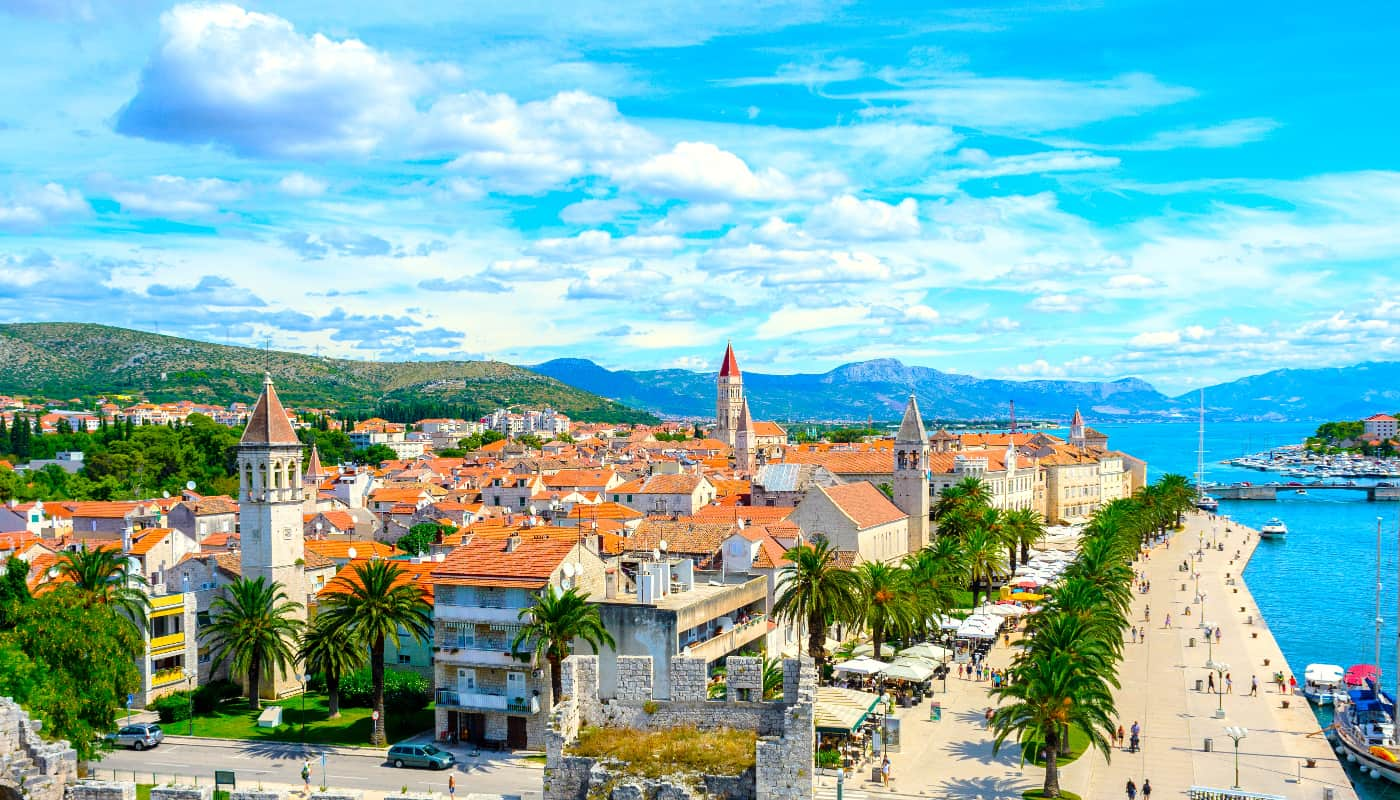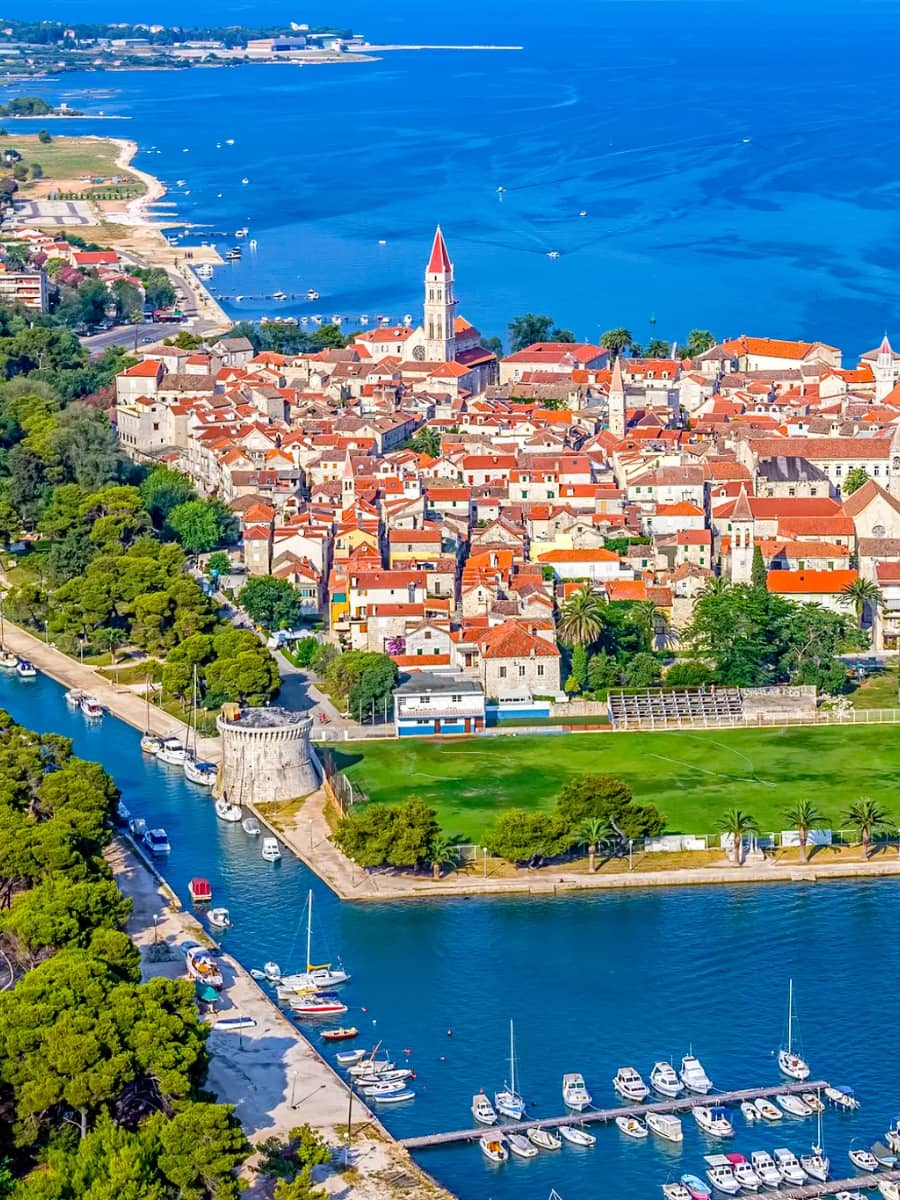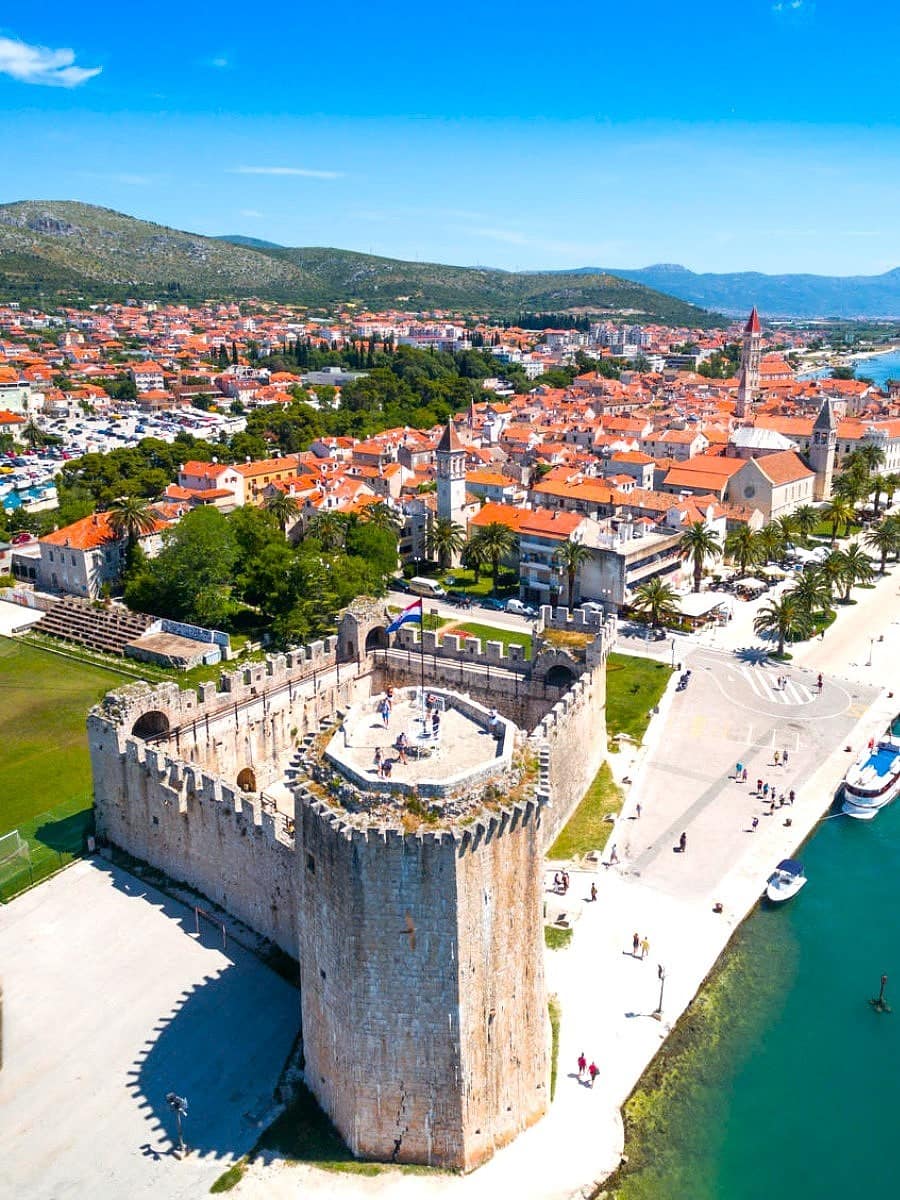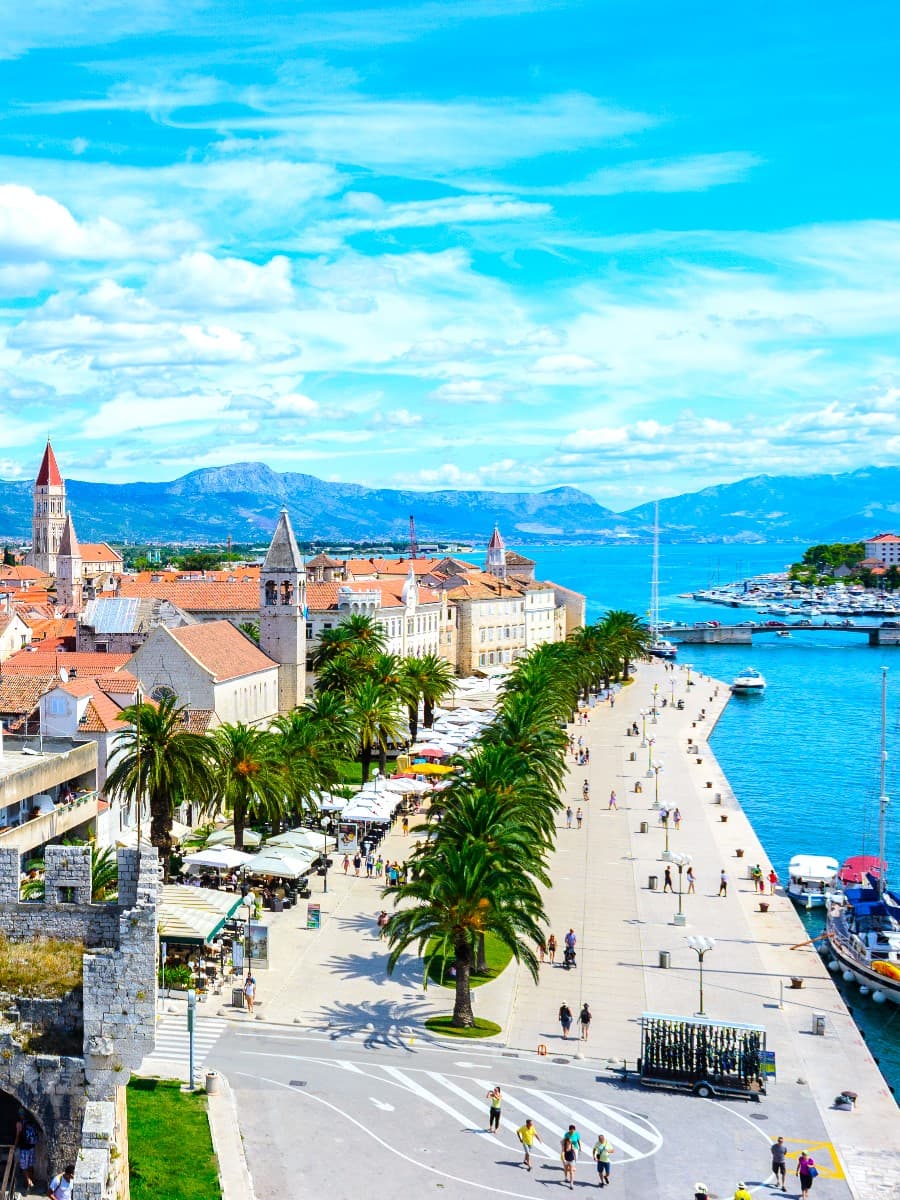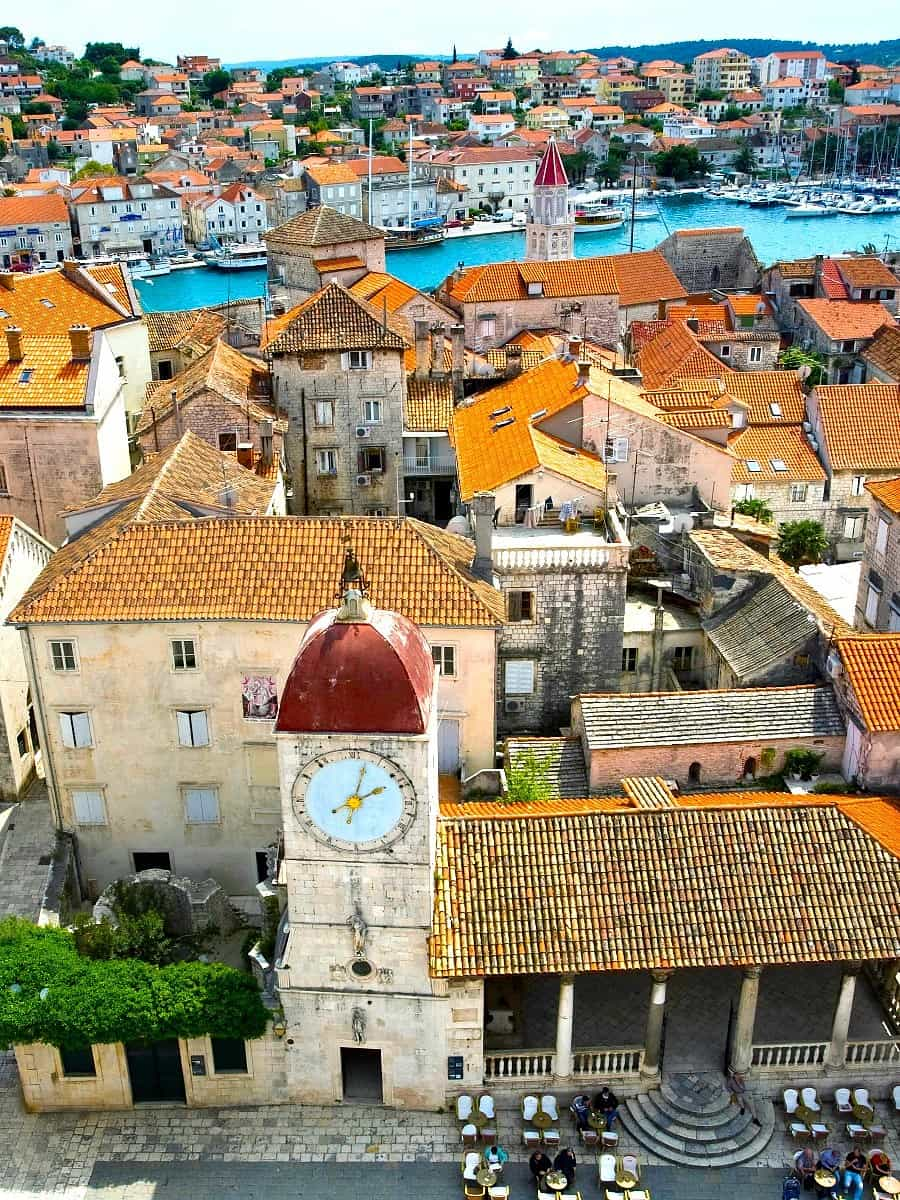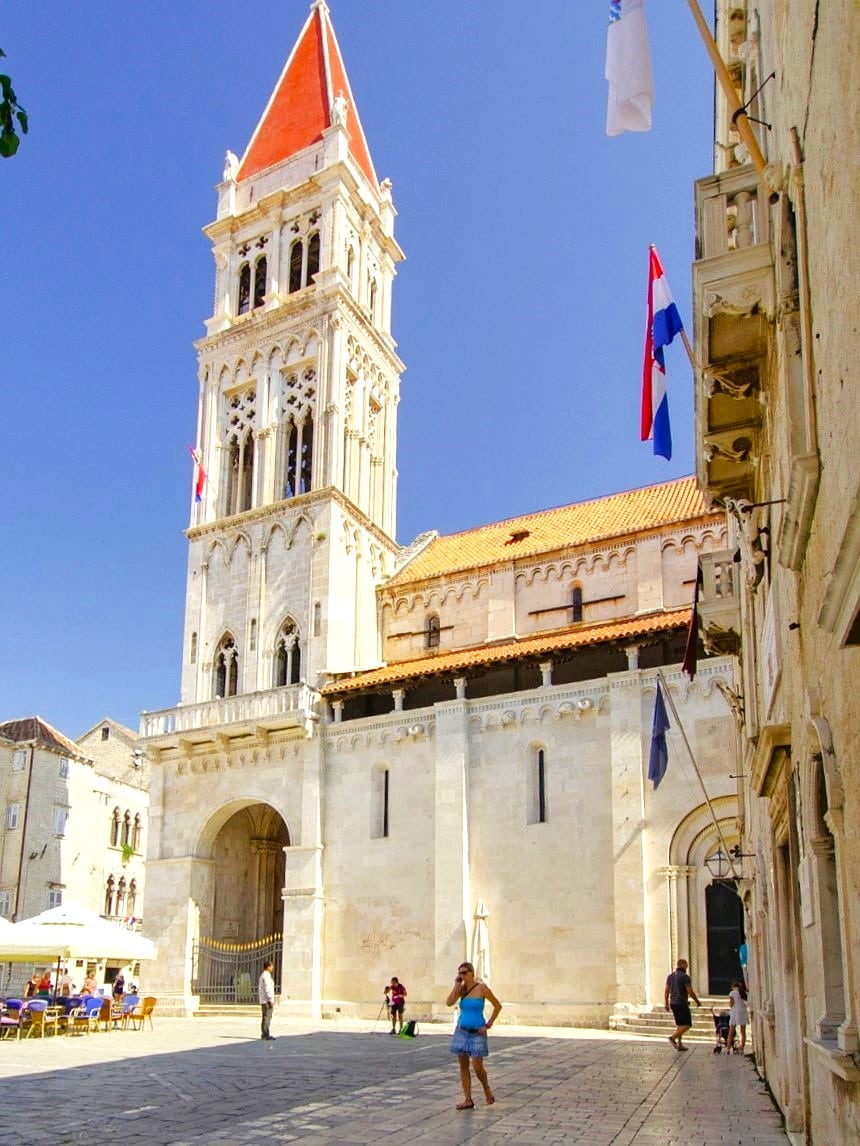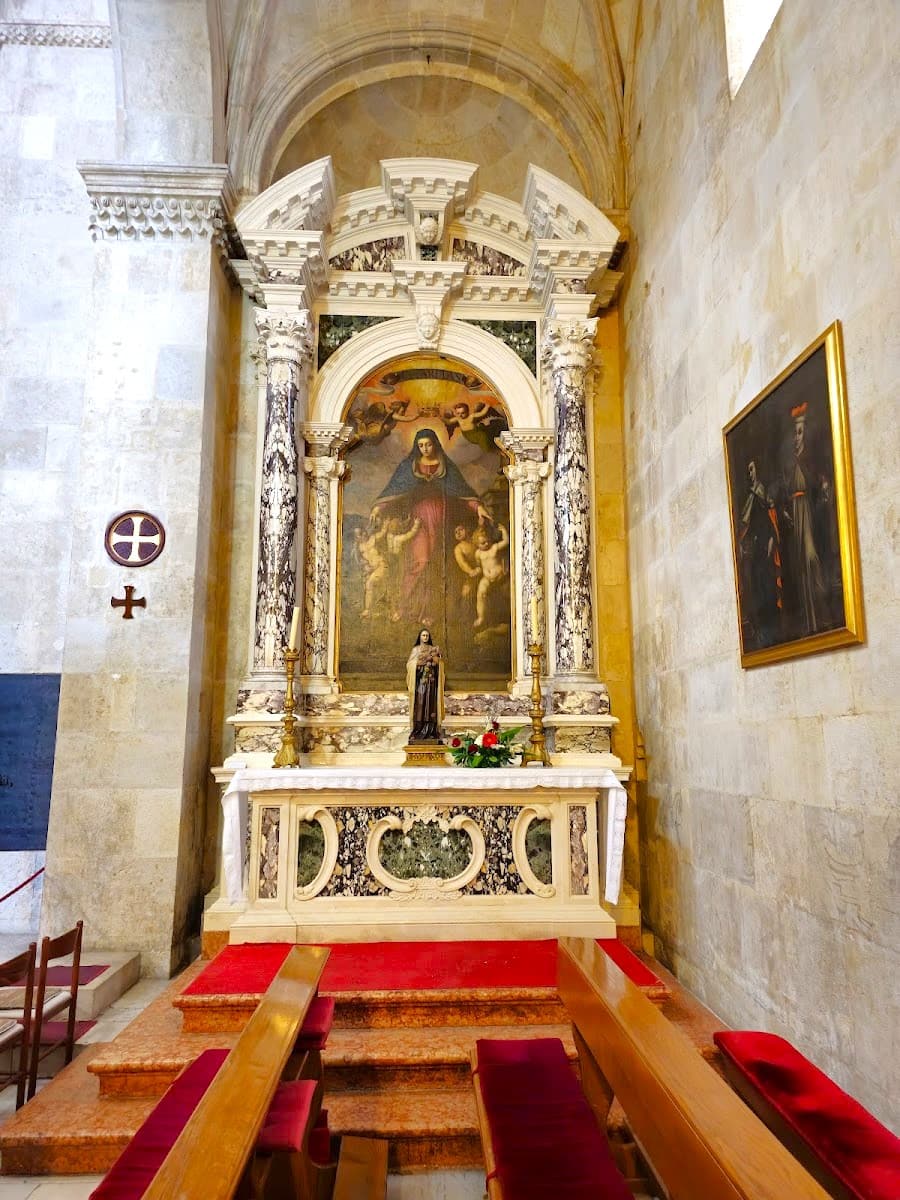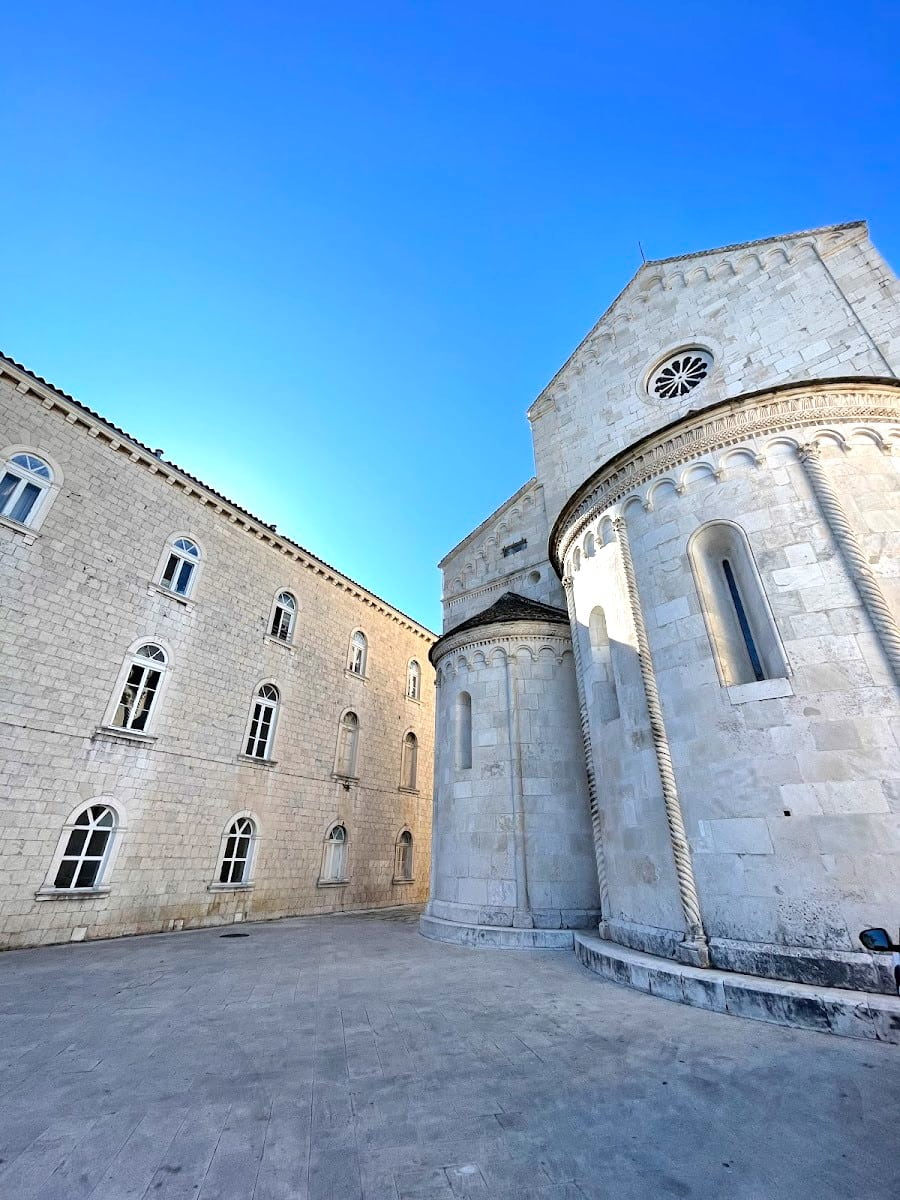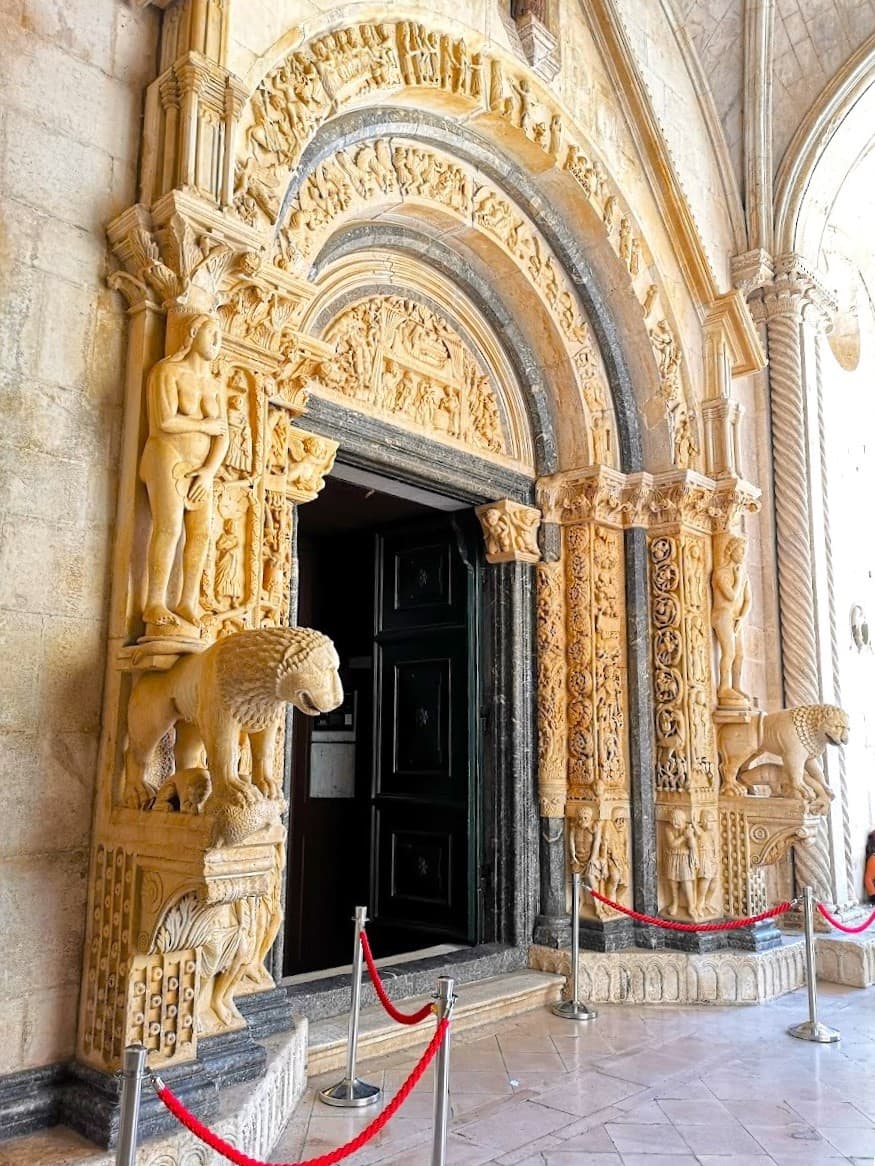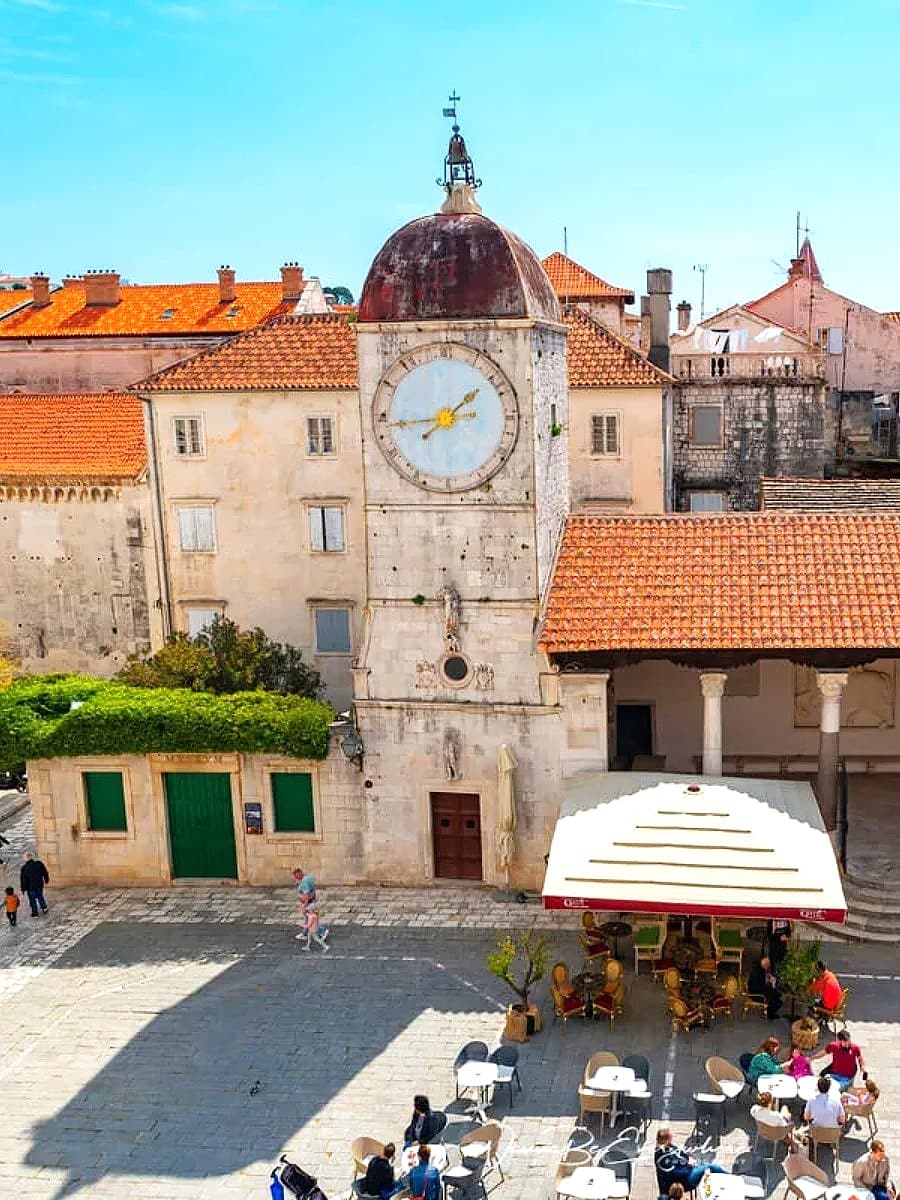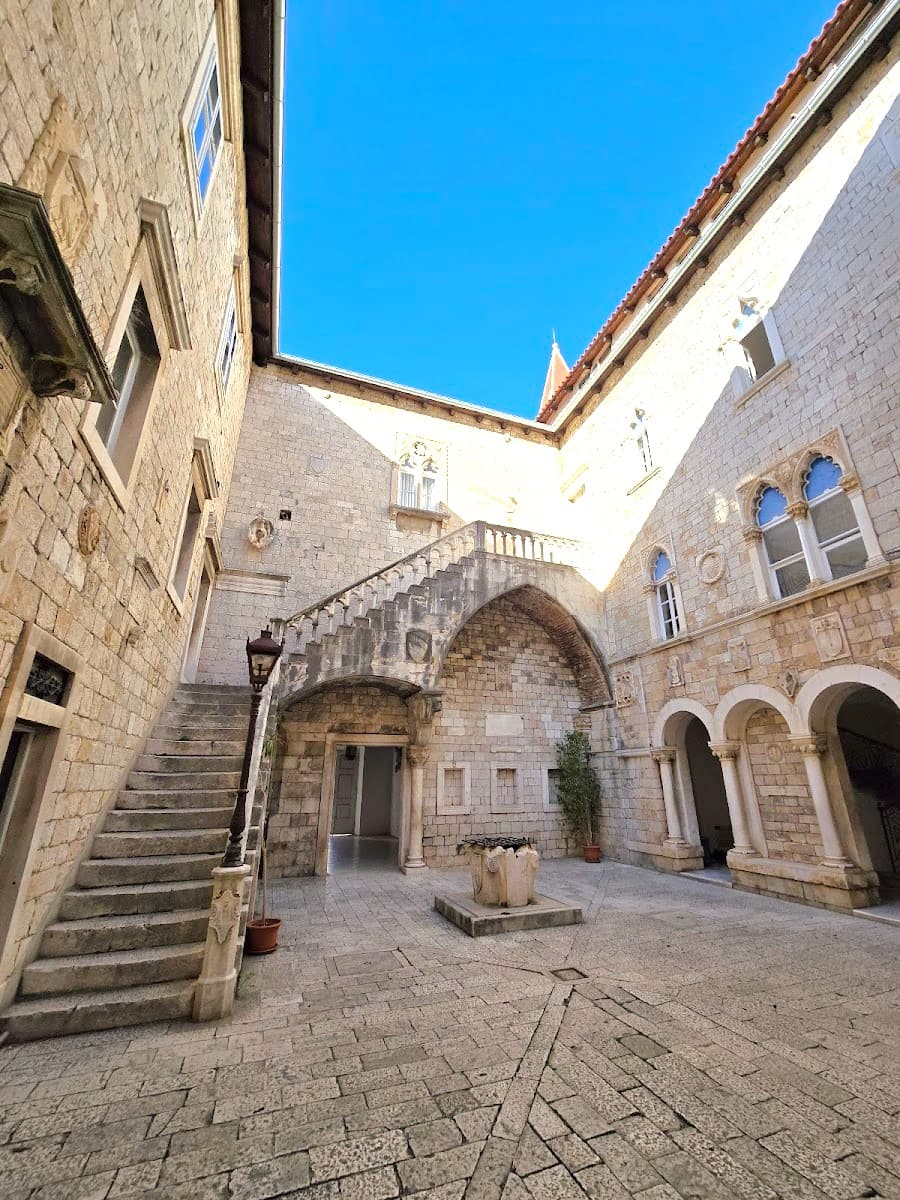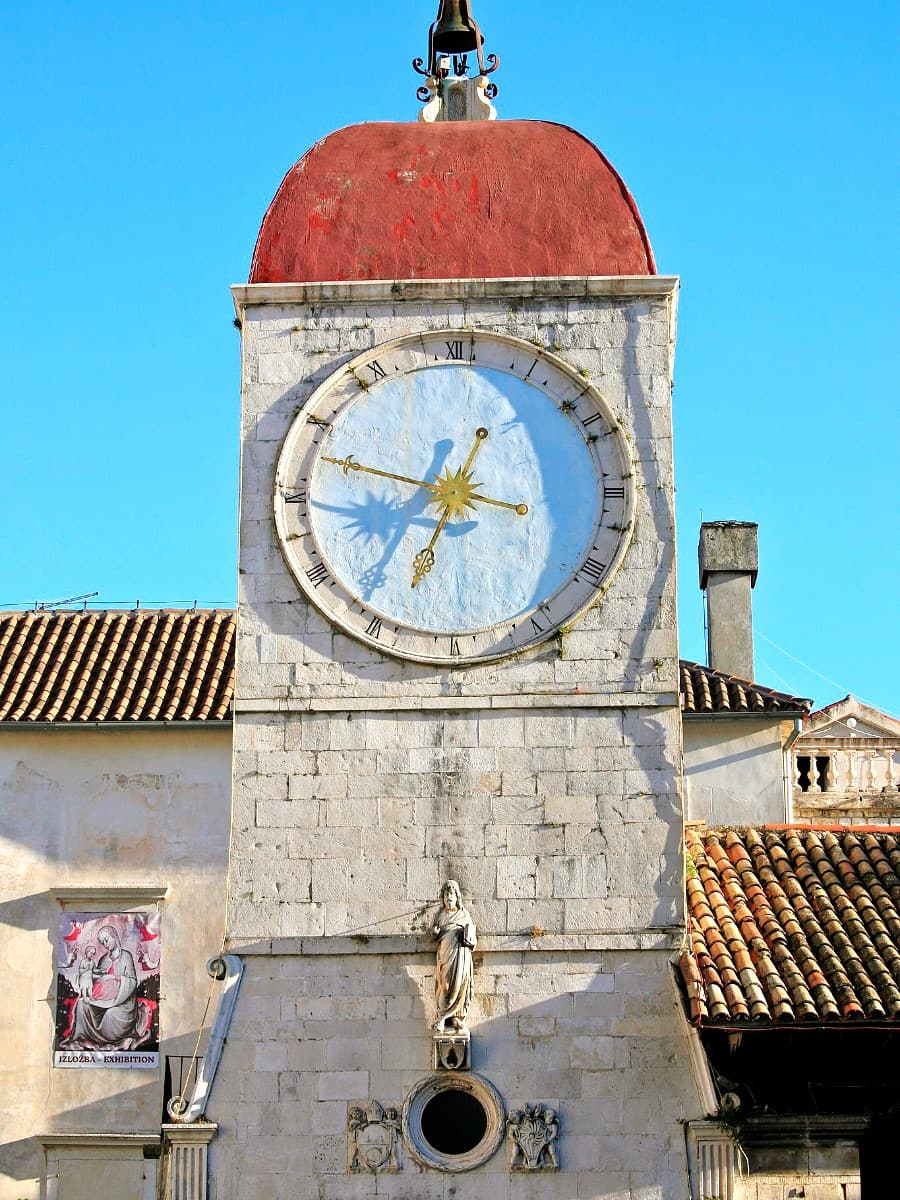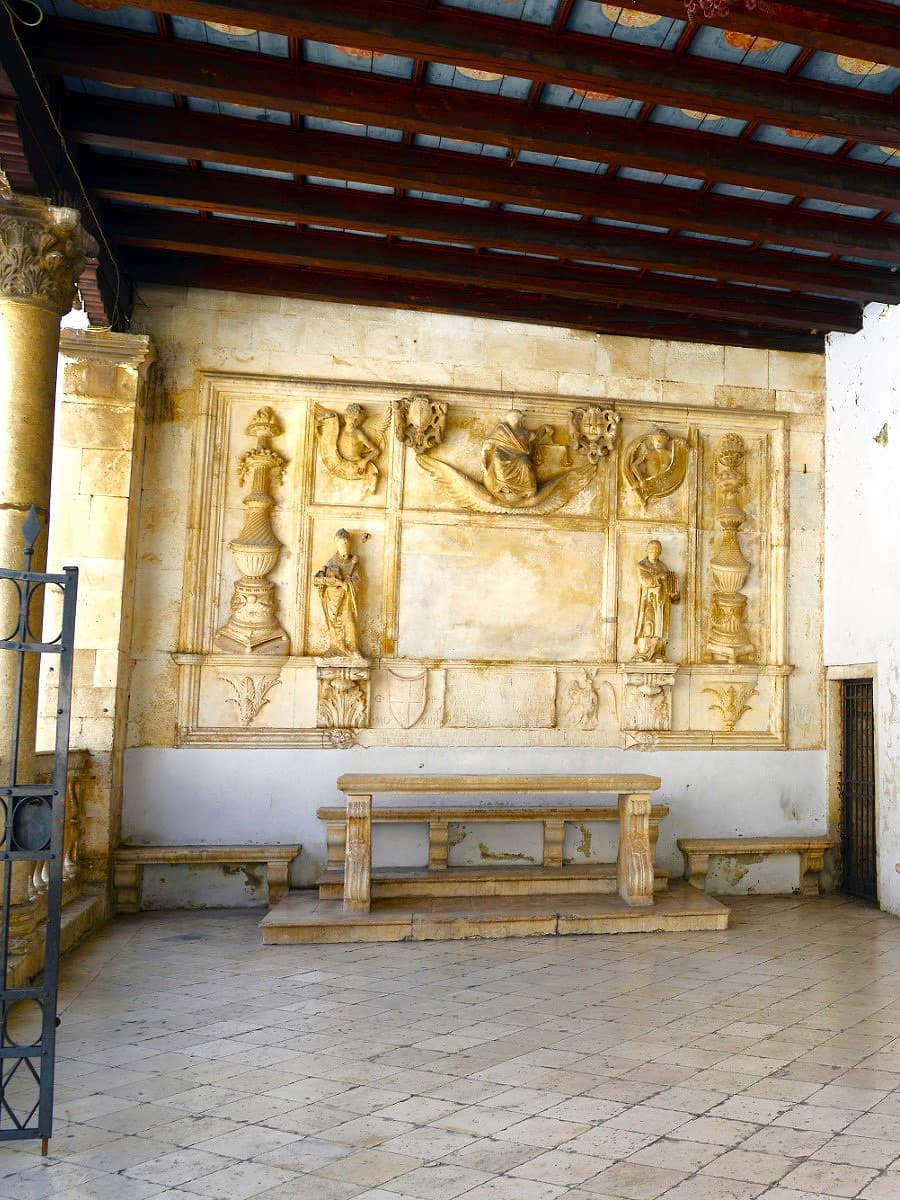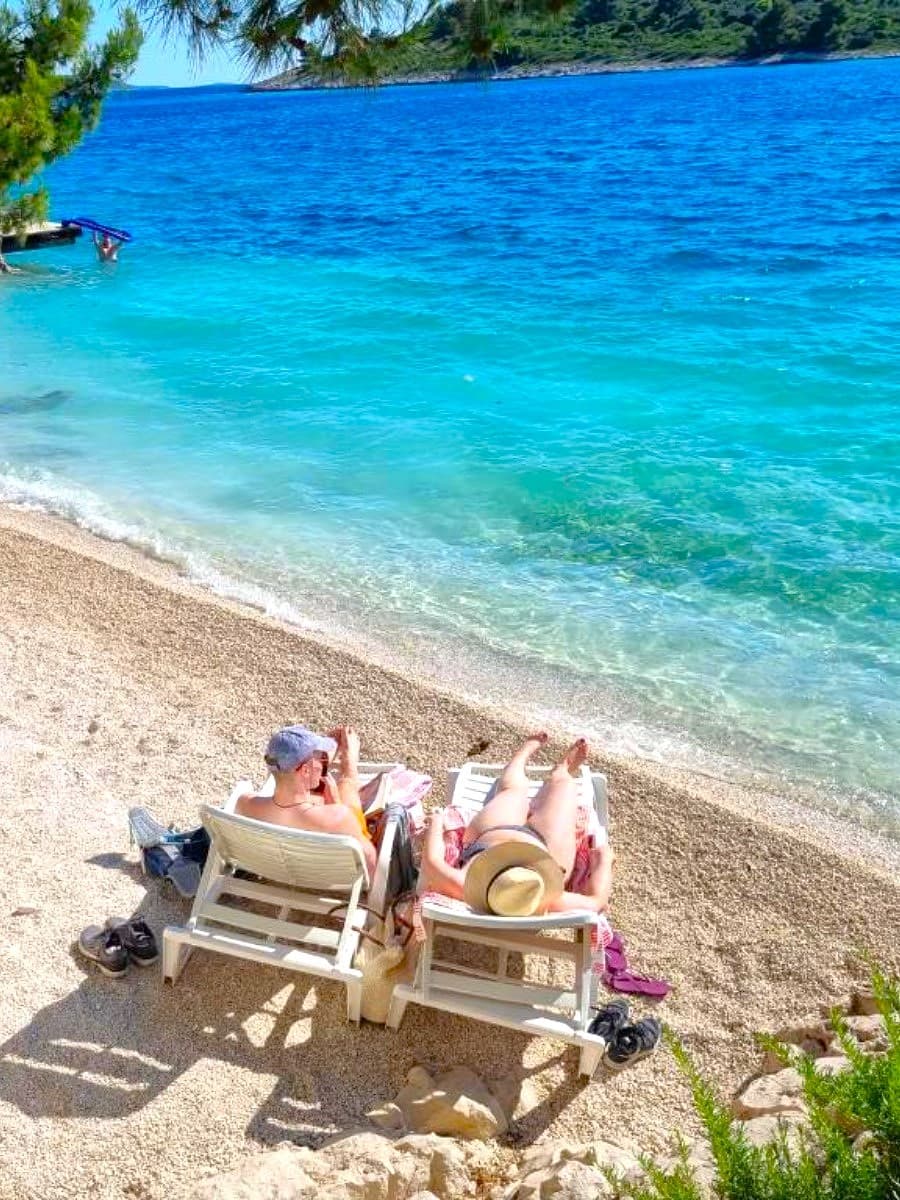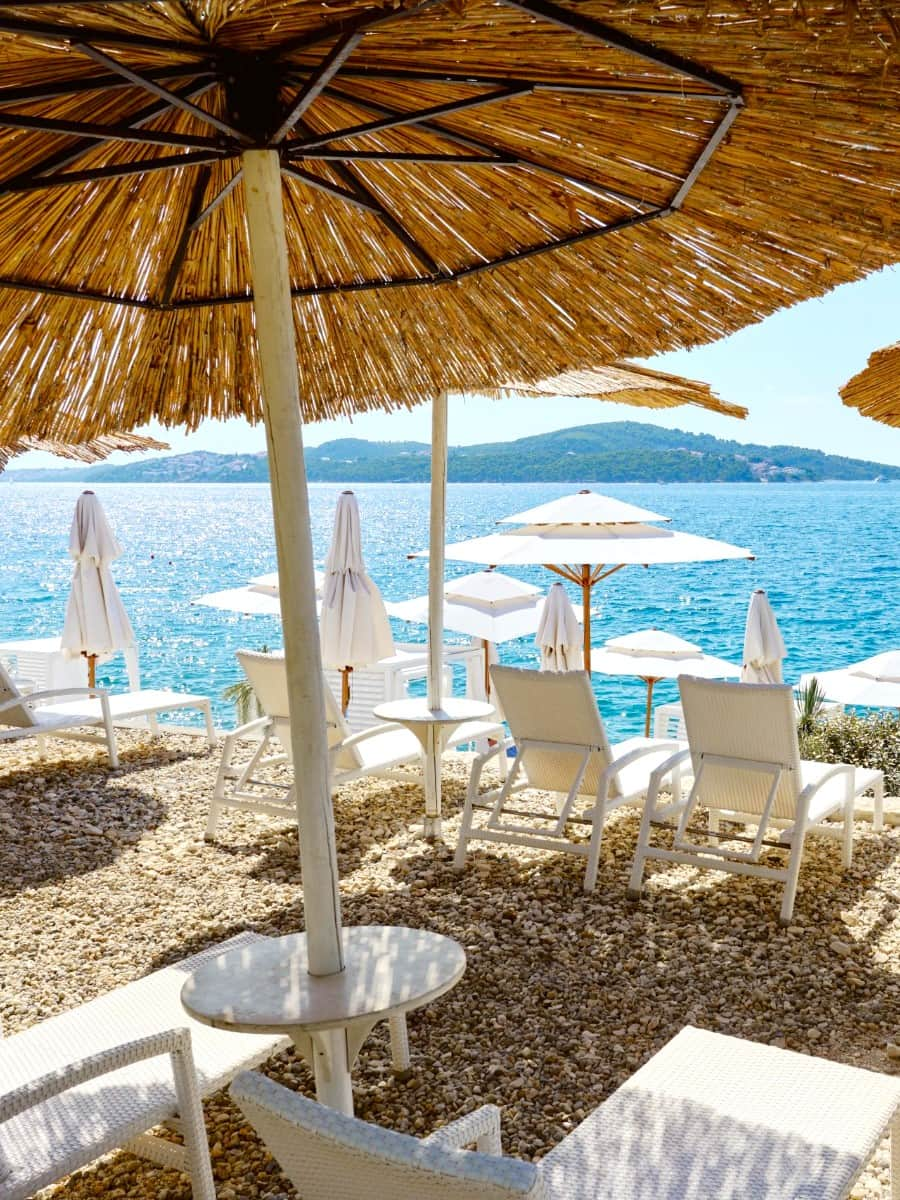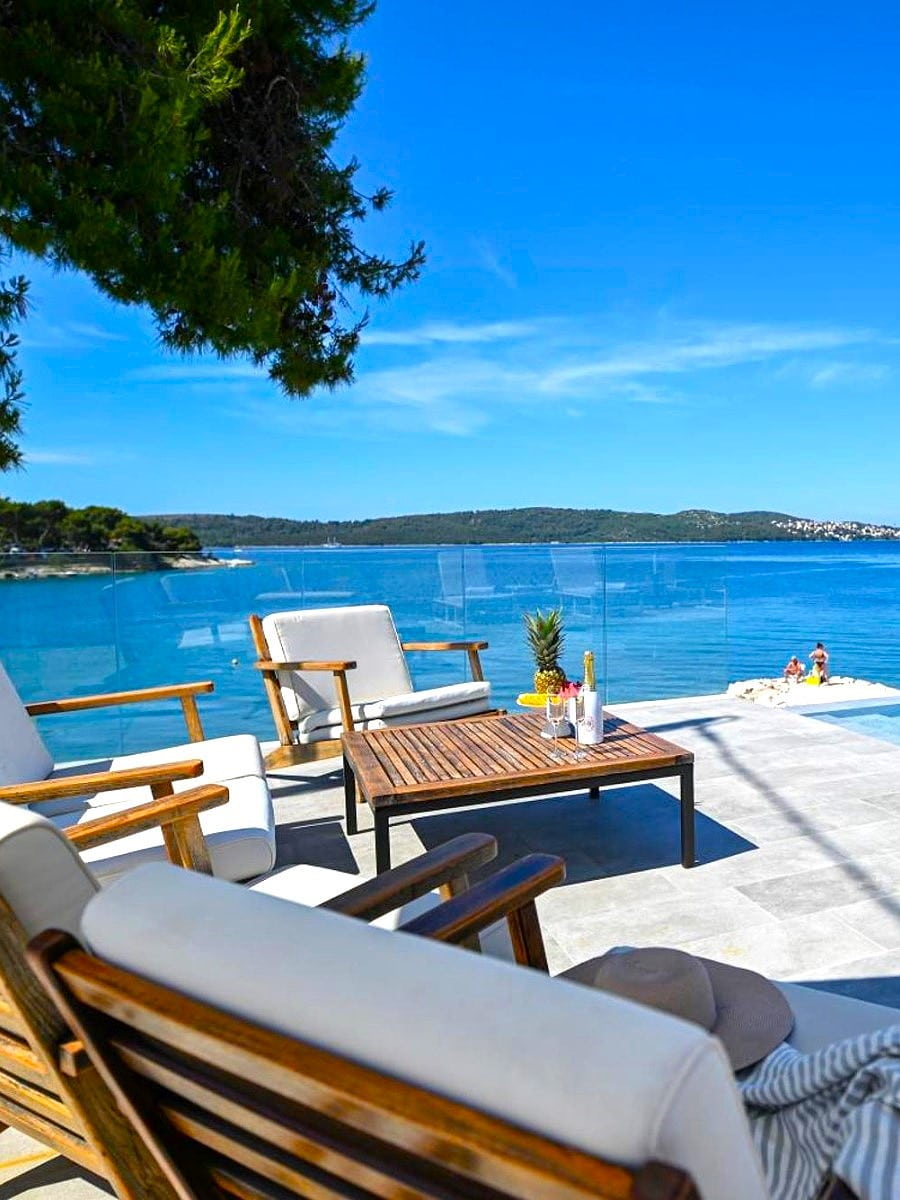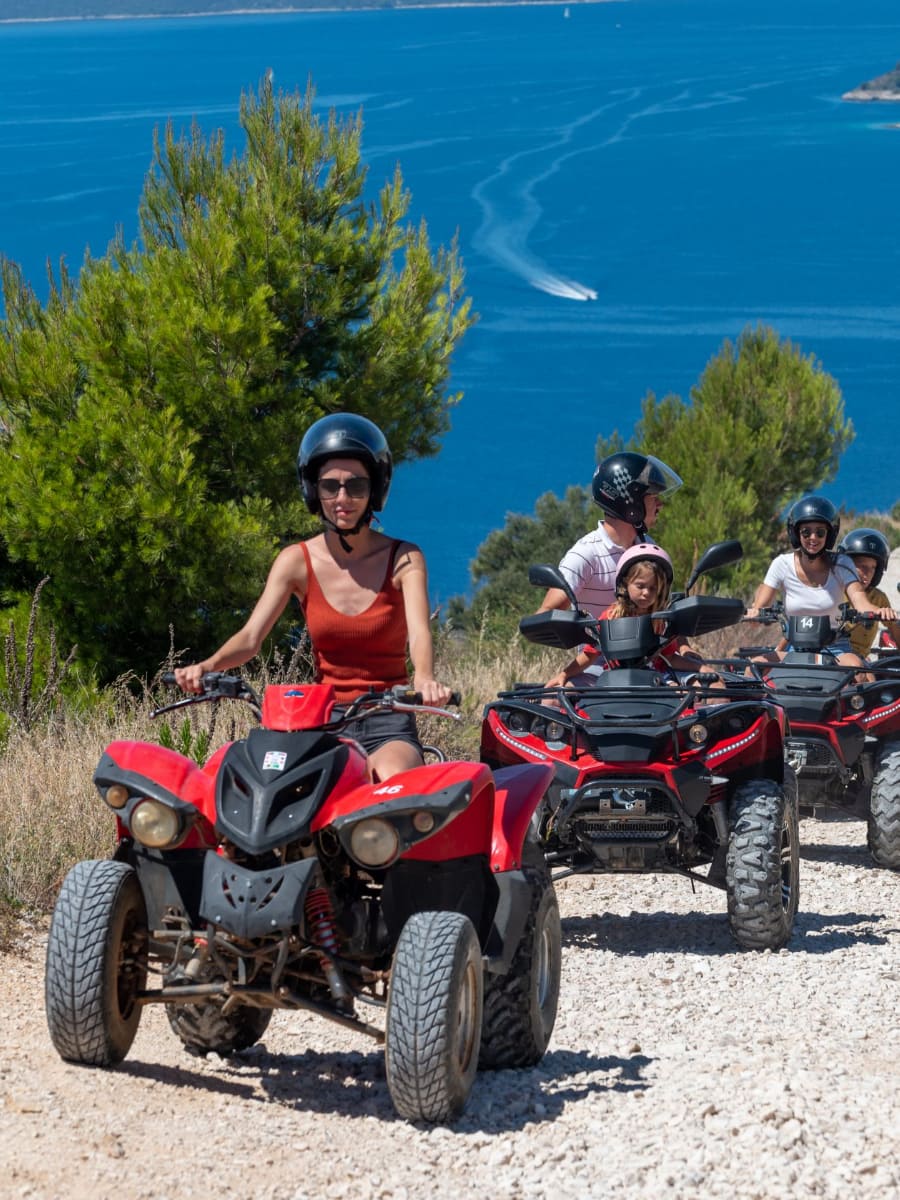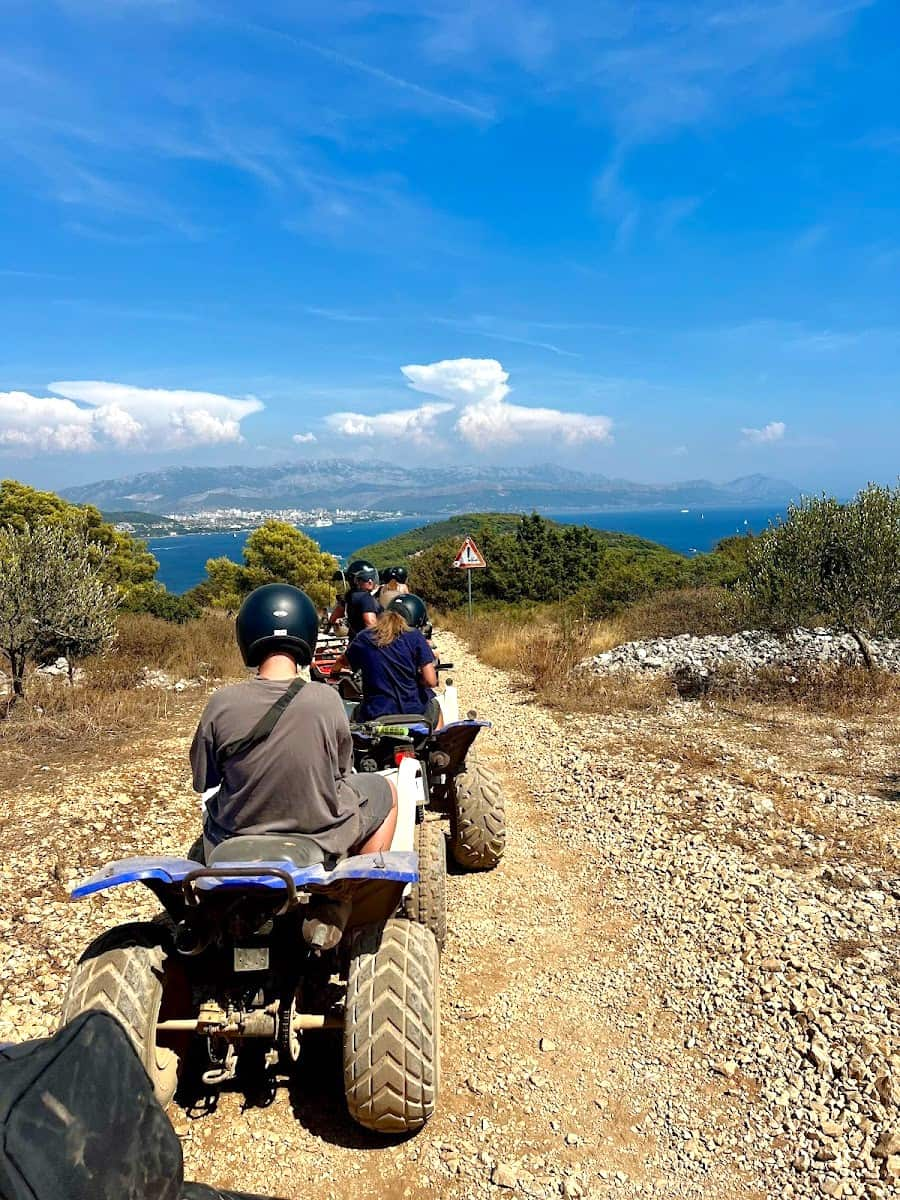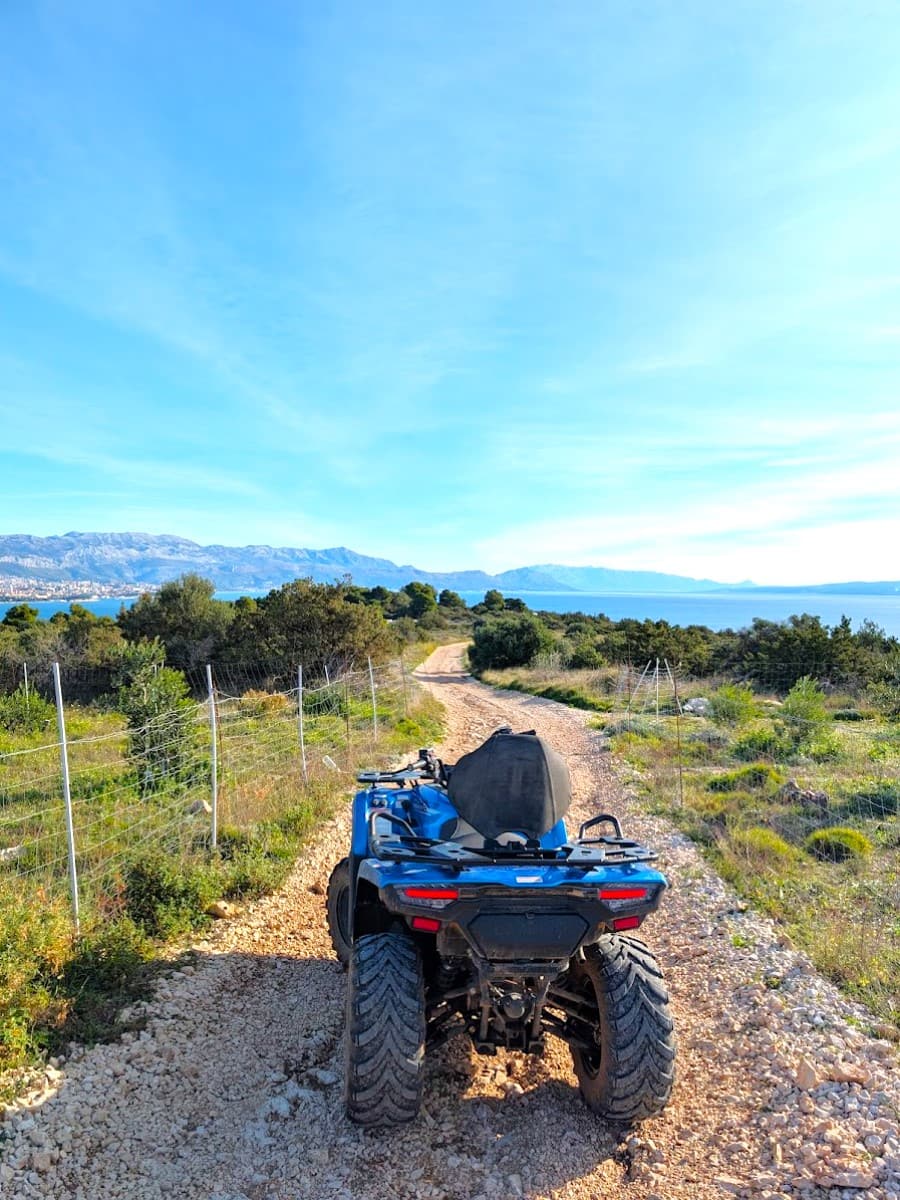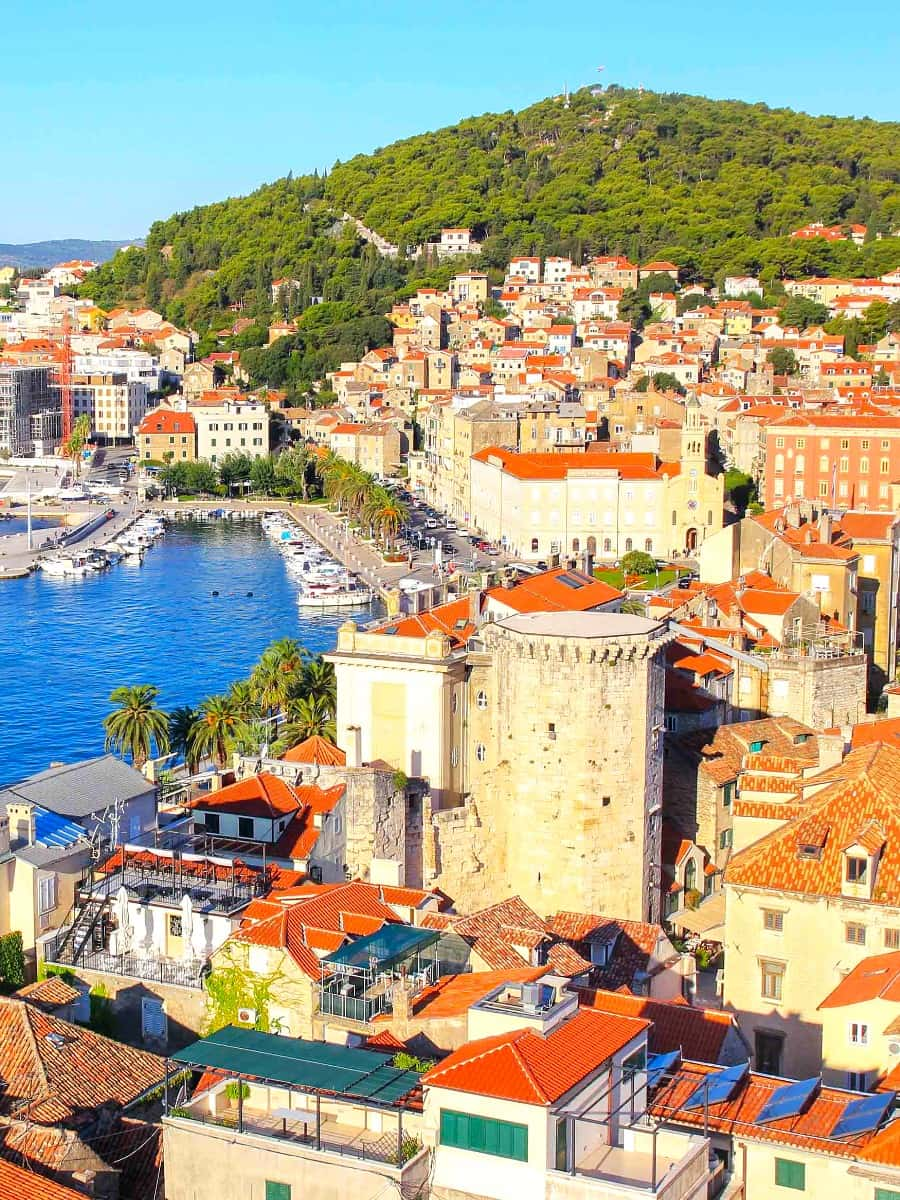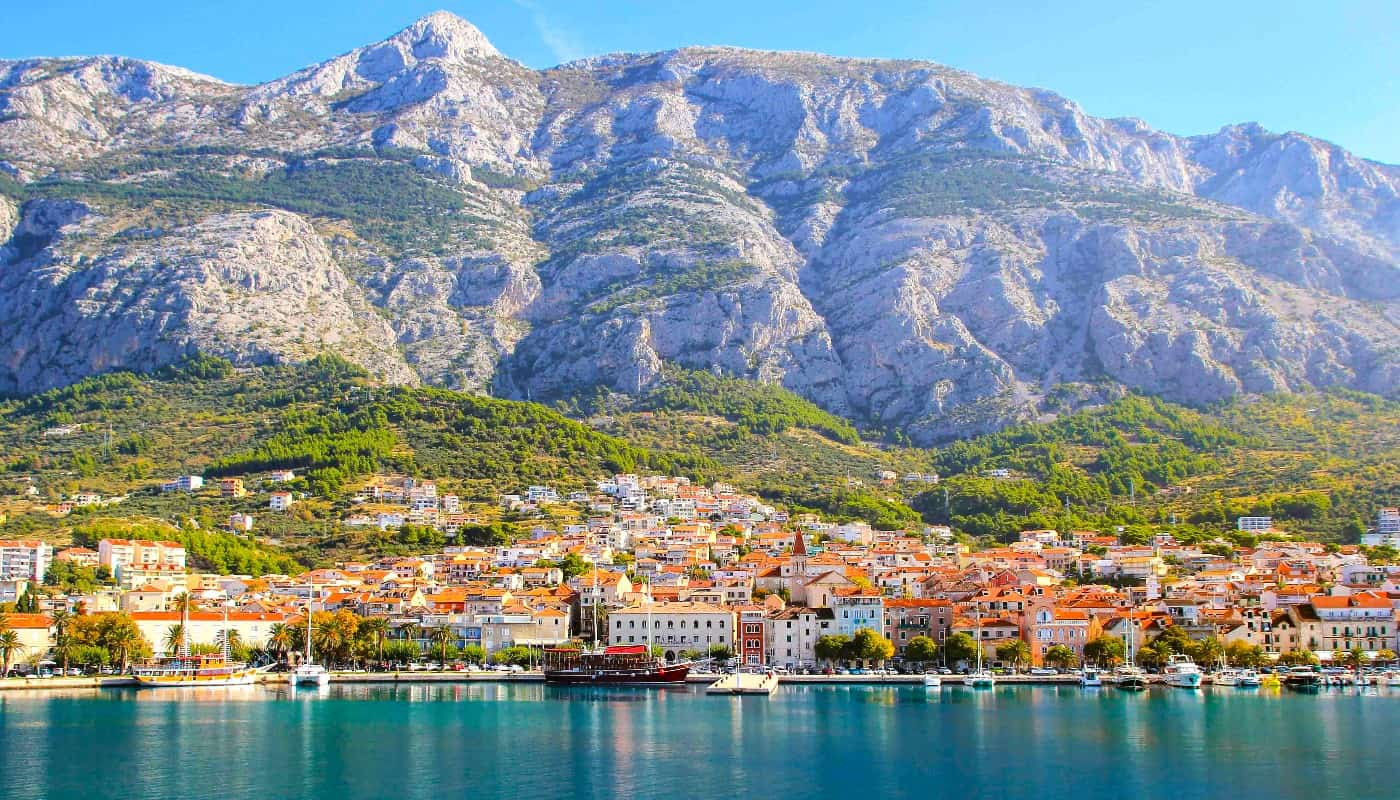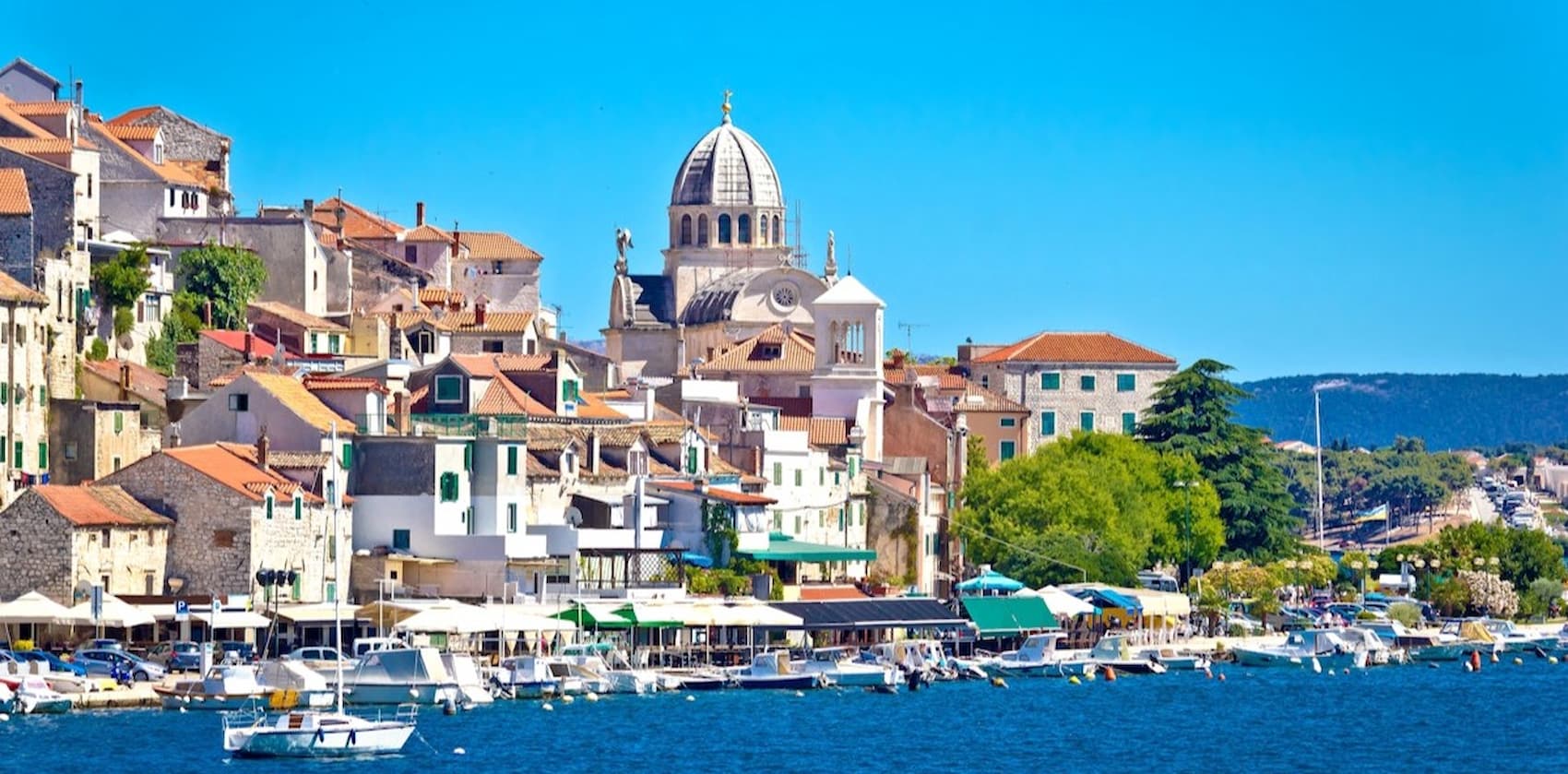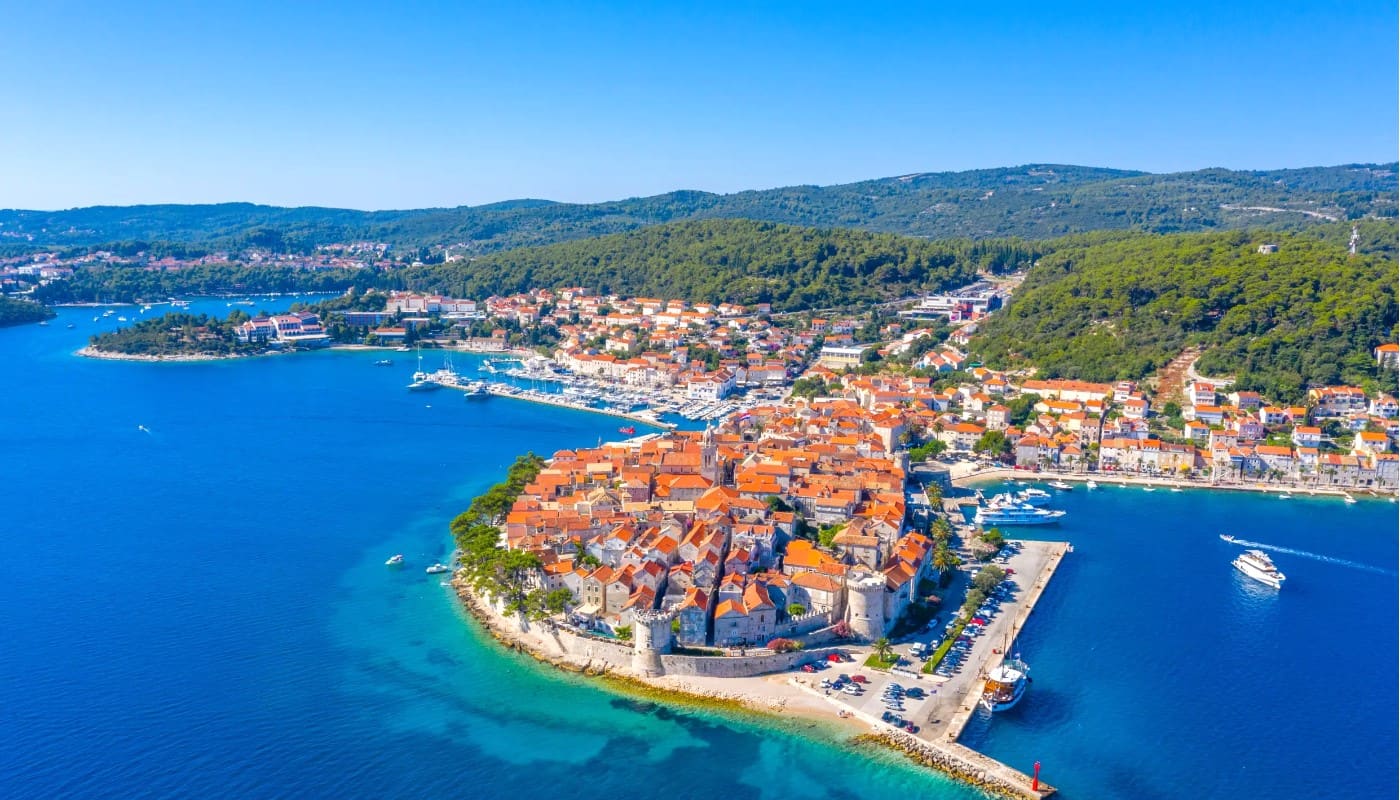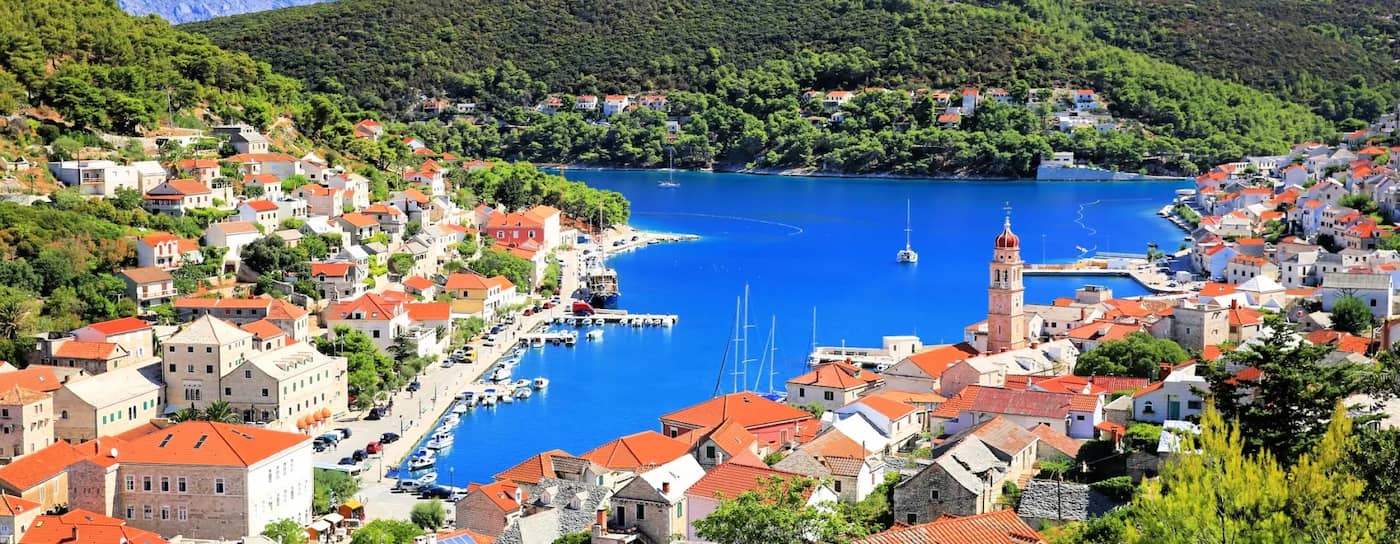The town of Trogir, located near Split Airport in Croatia, is known for its stunning Trogir Old Town, a UNESCO World Heritage Site filled with history and charm. This coastal gem is perfect for a day trip from Split or even a longer stay in Trogir. Some of the top things to see in Trogir include the Town Hall, narrow stone streets, and beautiful waterfront views.
Don’t miss Okrug Gornji Beach for a relaxing escape, or enjoy a meal at one of the great restaurants in Trogir. The stylish Brown Beach House is also a popular spot. Whether it’s a quick day in Trogir or a stop on your Croatia itinerary, the best time to visit Trogir is spring or early autumn for pleasant weather and fewer crowds. A trip to Trogir is easy and totally worth it!
🏠 Best Hotels in Trogir
- 💎Luxury Hotel: Apartments Exclusive Palace
- ✨5-Star: Apartments Exclusive Palace II
- 🏨4-Star: Luxury Rooms Saint Jacob
- 🛏️3-Star: Villa Katarina
- 💸Cheap: Apartments and rooms with parking space Trogir - 13102
- 🏢Apartment: Trogir Downtown Apartments
- 👨👩👧👦For Families: Hotel Vila Tina
- 🏩For Couples: Hotel Trogirski Dvori
💁 Best Guided Tours
- Split or Trogir Private Speedboat Cruise: Tailor the Route from €407 (⭐4.9/5)
- Blue Cave and Hvar Tour - 5 Islands Tour from Split and Trogir from €107 (⭐4.9/5)
- Trogir & Split Walk Tour with Daniela
- Experience Trogir with a Local Guide
Best Things to do in Trogir, Croatia
1. Trogir’s UNESCO Old Town
UNESCO World Heritage Site. Walking into Trogir’s Old Town, I was immediately surrounded by centuries-old cobblestone streets and narrow alleys. This car-free zone is packed with medieval architecture and Venetian influence, making every corner feel like a step back in time. The atmosphere is alive with local life—children playing, laundry drying overhead, and the scent of fresh bread drifting from small bakeries.
Medieval Architecture. The buildings here, with their terracotta rooftops and Romanesque-Gothic style, are a feast for the eyes. I found myself stopping often to admire carved doorways and quirky courtyards. Exploring solo is easy—just follow the winding streets and you’ll stumble upon hidden gems.
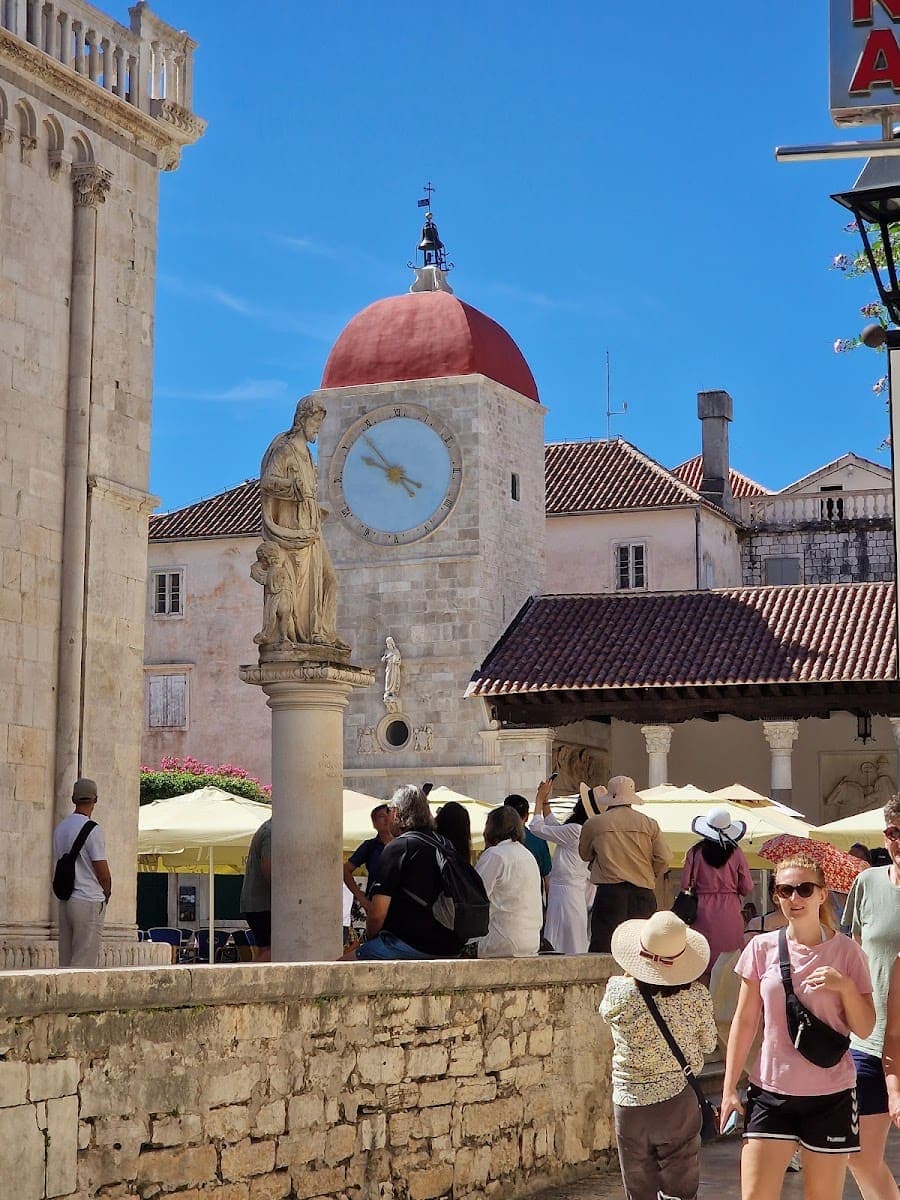
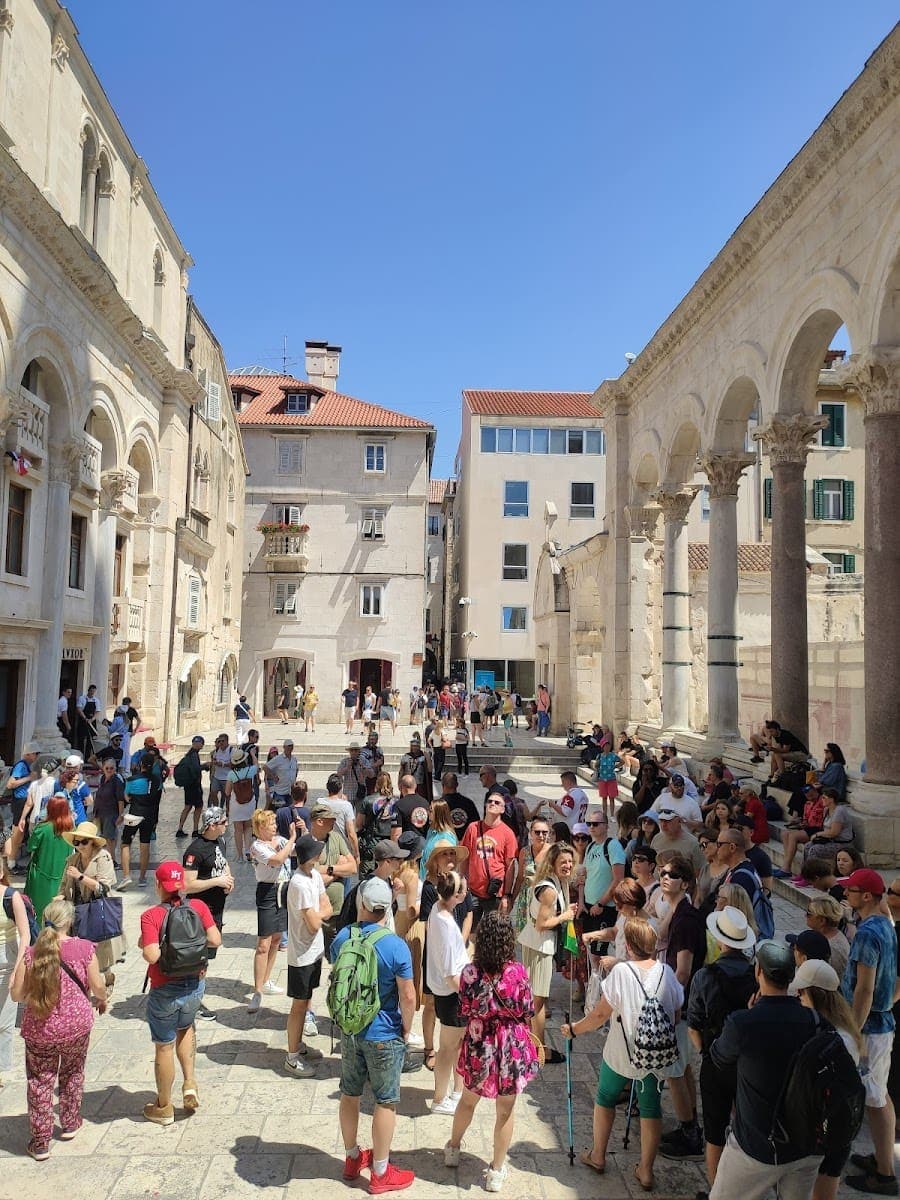
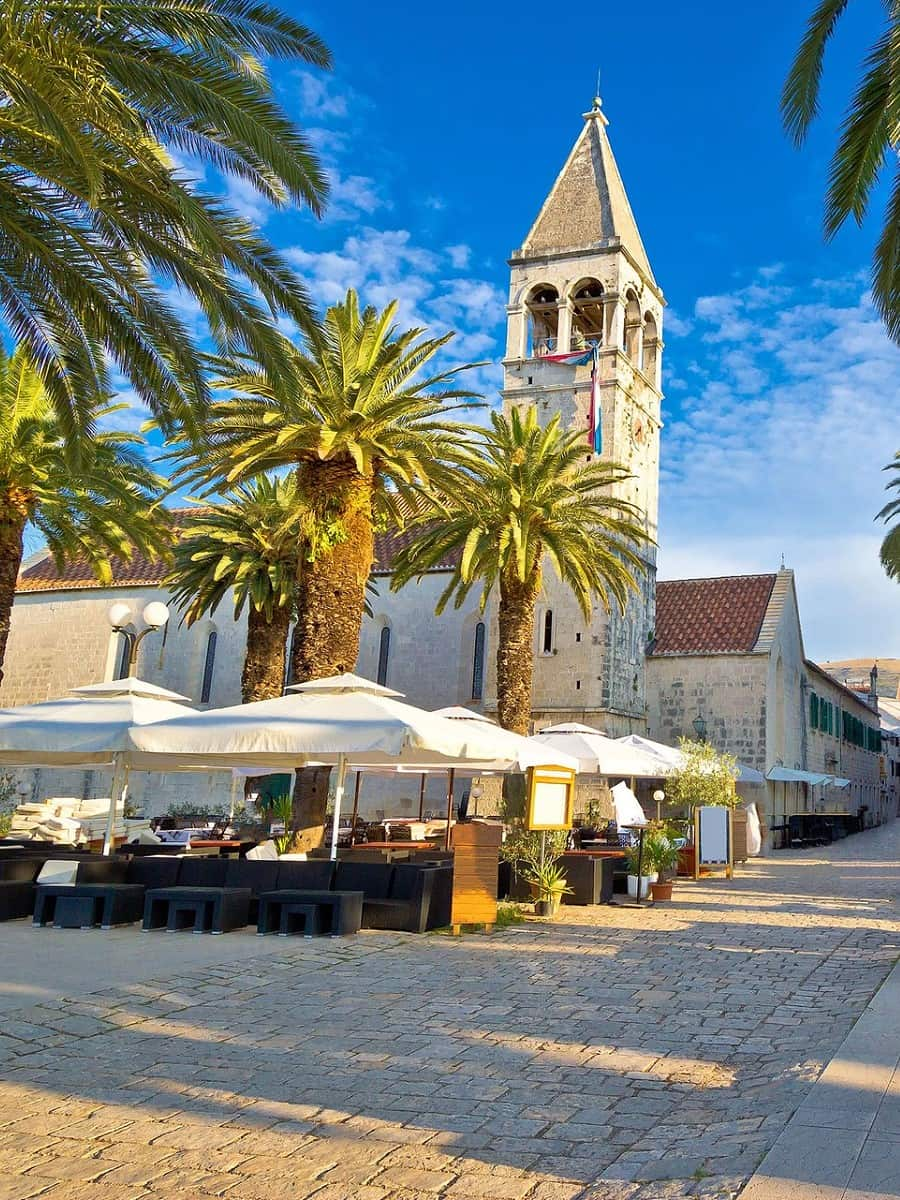
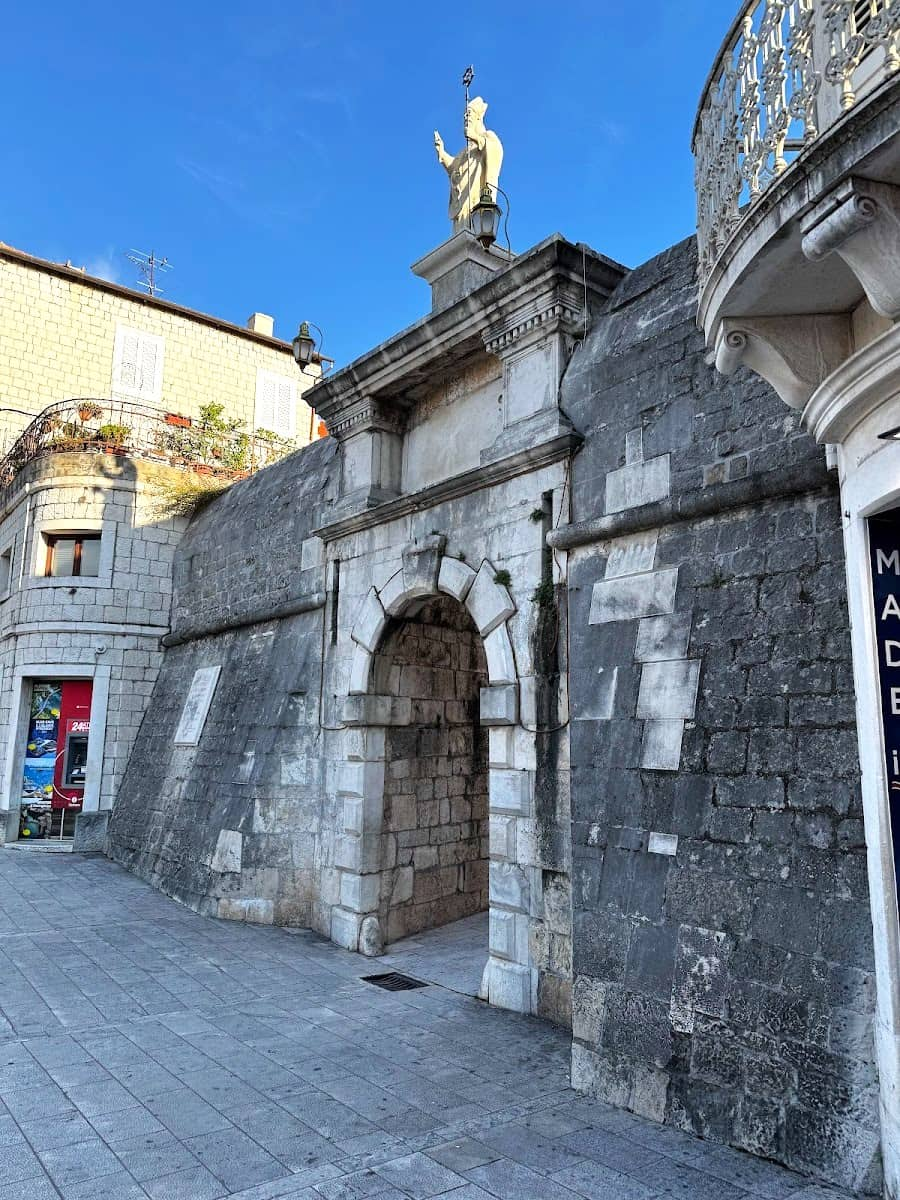
Useful Tourist Info. The Old Town is small, so you won’t get lost for long, but a free map from the Tourist Information Office (near the Land Gate) helps. Most shops and attractions open around 9 AM and close by 7 PM, especially outside peak summer. ATMs are easy to find, and most places accept cards, but it’s smart to carry some kuna for small purchases.
Budget Tip: Skip the paid walking tours (150-200 HRK/€20-27) and use the free English information boards scattered throughout the Old Town.
Top Sights to Look For:
- Land Gate (main entrance)
- North Gate
- City Loggia
- Cipiko Palace
⭐ Best Activities
- Trogir Old Town & Klis Fortress from Split – Set off from Split on a guided tour that showcases the UNESCO World Heritage-listed city of Trogir and the magnificent Klis Fortress. To save time doing your research on the sites—the trip includes guided tours to enhance your knowledge of local landmarks. There’s also free time for taking photos and independent exploring before the return to Split.
2. Cathedral of St. Lawrence and Bell Tower
Cathedral of St. Lawrence. This Romanesque-Gothic masterpiece is the star of Trogir’s central square. I paid 40 HRK (about €5.30) for entry, and it was worth every kuna. The western portal, carved by master Radovan, is a highlight—look for the detailed lions and biblical scenes.
Bell Tower. For an extra 20 HRK (€2.65), I climbed the narrow staircase to the top. The panoramic views of the Adriatic Sea, Čiovo Island, and Trogir’s rooftops are breathtaking, especially in the soft morning light.
Useful Tourist Info. The cathedral is open daily, usually from 9 AM to 6 PM, but hours may vary in winter. Shoulders and knees must be covered—bring a scarf or shawl if you’re visiting in summer attire. The Bell Tower climb is steep and not recommended for those with mobility issues or a fear of heights.
Insider Tip: Visit before 10 AM for fewer crowds and the best photos.
Common Tourist Mistake: Many skip the Bell Tower, but it’s the best spot for photos of Trogir’s terracotta rooftops and marina views.
What to Bring:
- Scarf or shawl for covering shoulders
- Camera or smartphone
- Water bottle (especially in summer)
| Entry Fee | Price |
|---|---|
| Adults | €5 (approx. $5.40 USD) |
| Children | €3 (approx. $3.20 USD) |
⭐ Best Activities
- Experience Trogir with a Local Guide – Meet at the North Gate of Trogir’s Old Town for a locally guided exploration. Tours run Mon–Sat 09:00–19:00, Sun 11:30–19:00. Price varies by group size.
3. Kamerlengo Castle and St. Mark’s Tower
Kamerlengo Castle. This 15th-century Venetian fortress sits at the edge of Old Town. Entry is 30 HRK (€4), and climbing the walls gives you sweeping views of the marina and Dalmatian Archipelago. In summer, the castle courtyard hosts concerts and folk music events—an unforgettable experience under the stars.
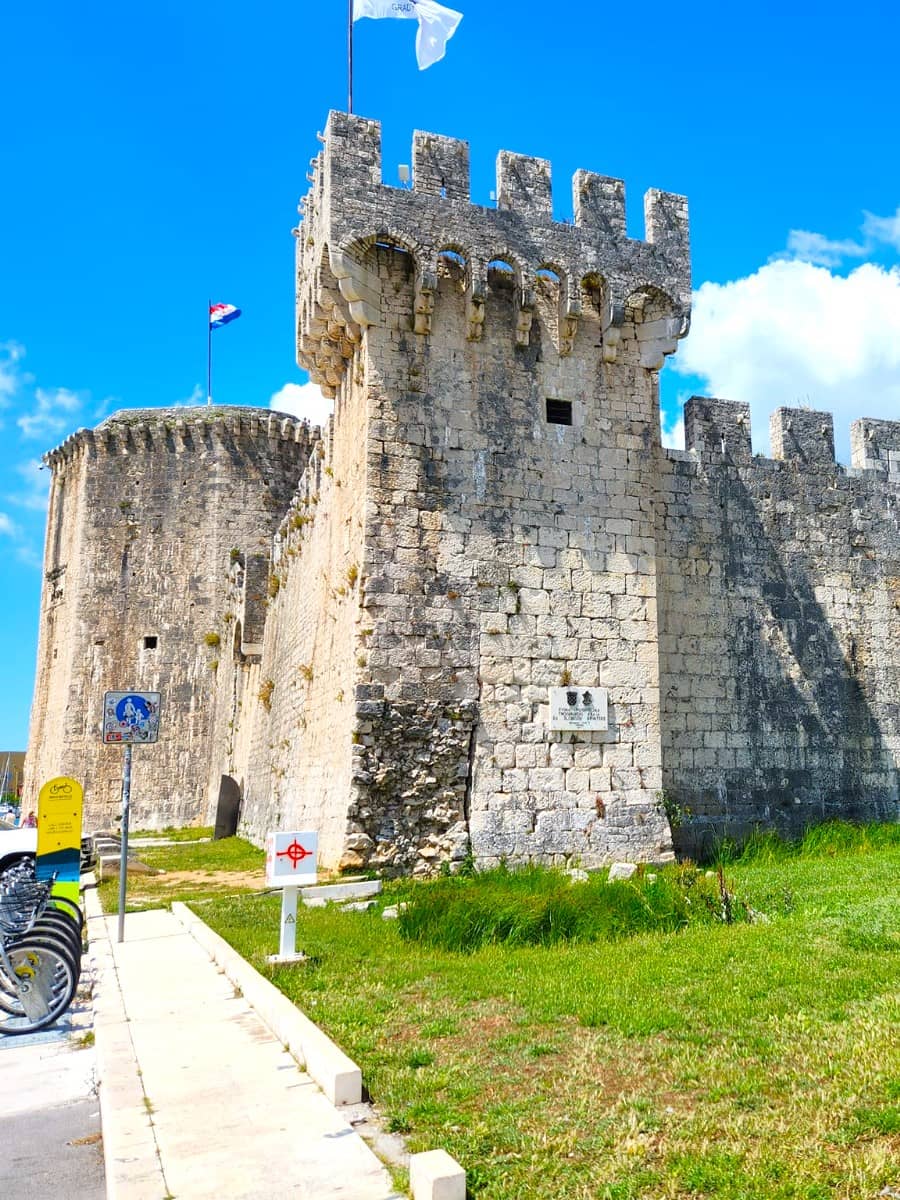
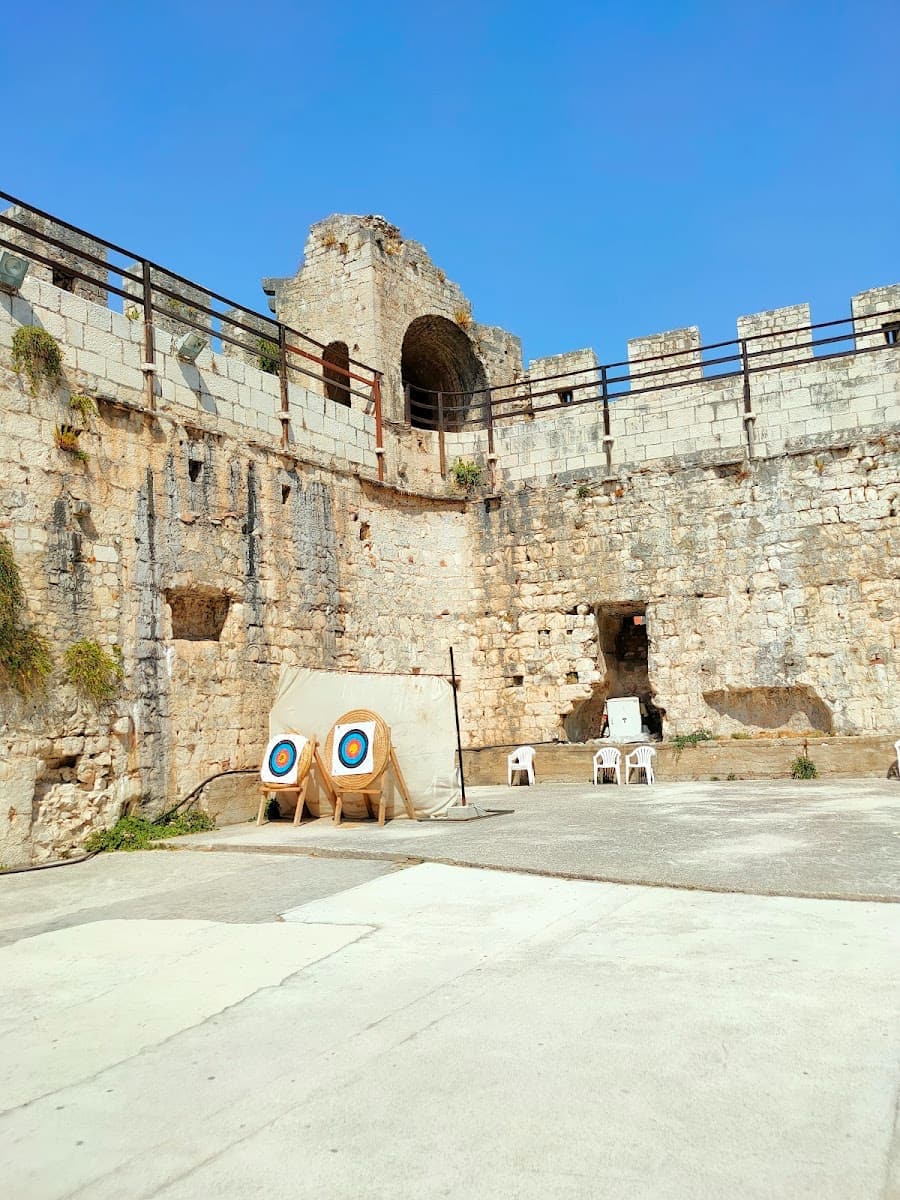
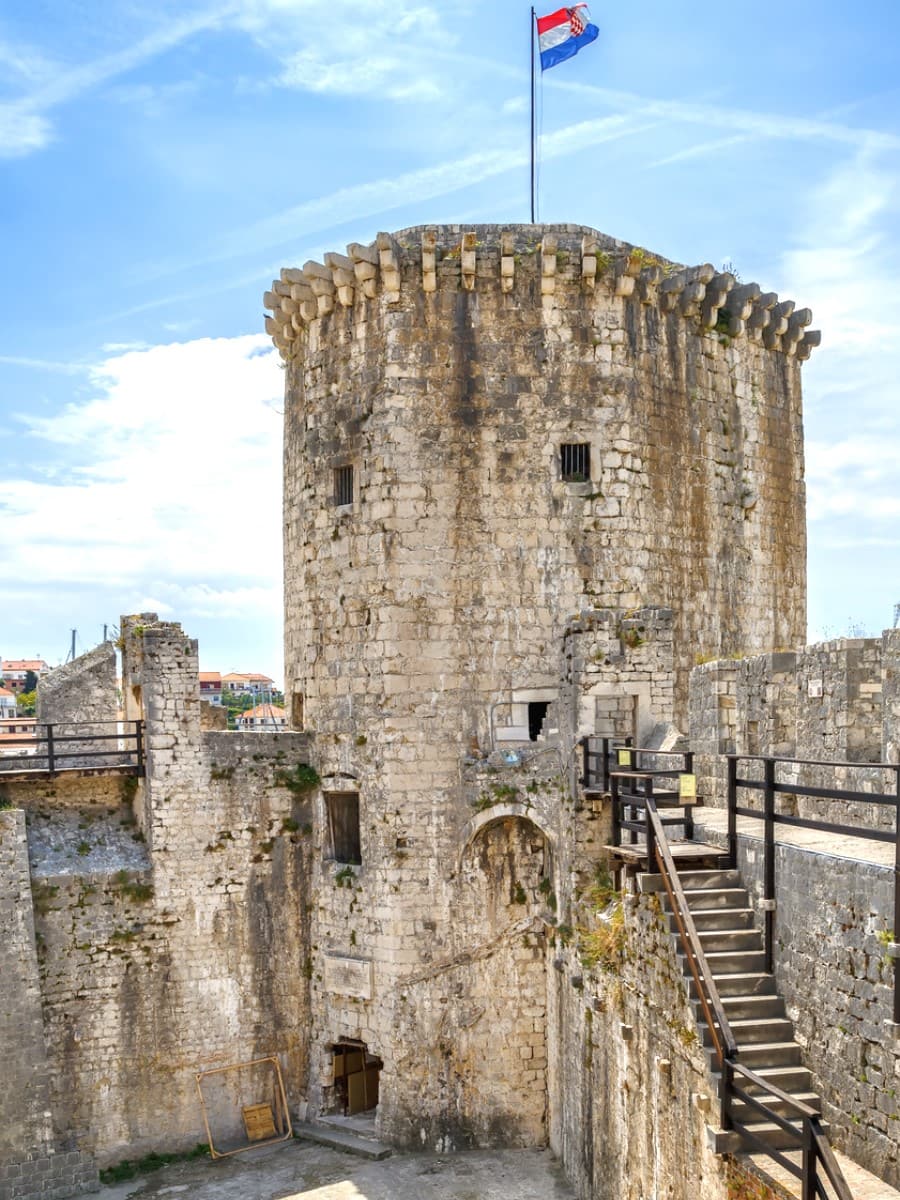
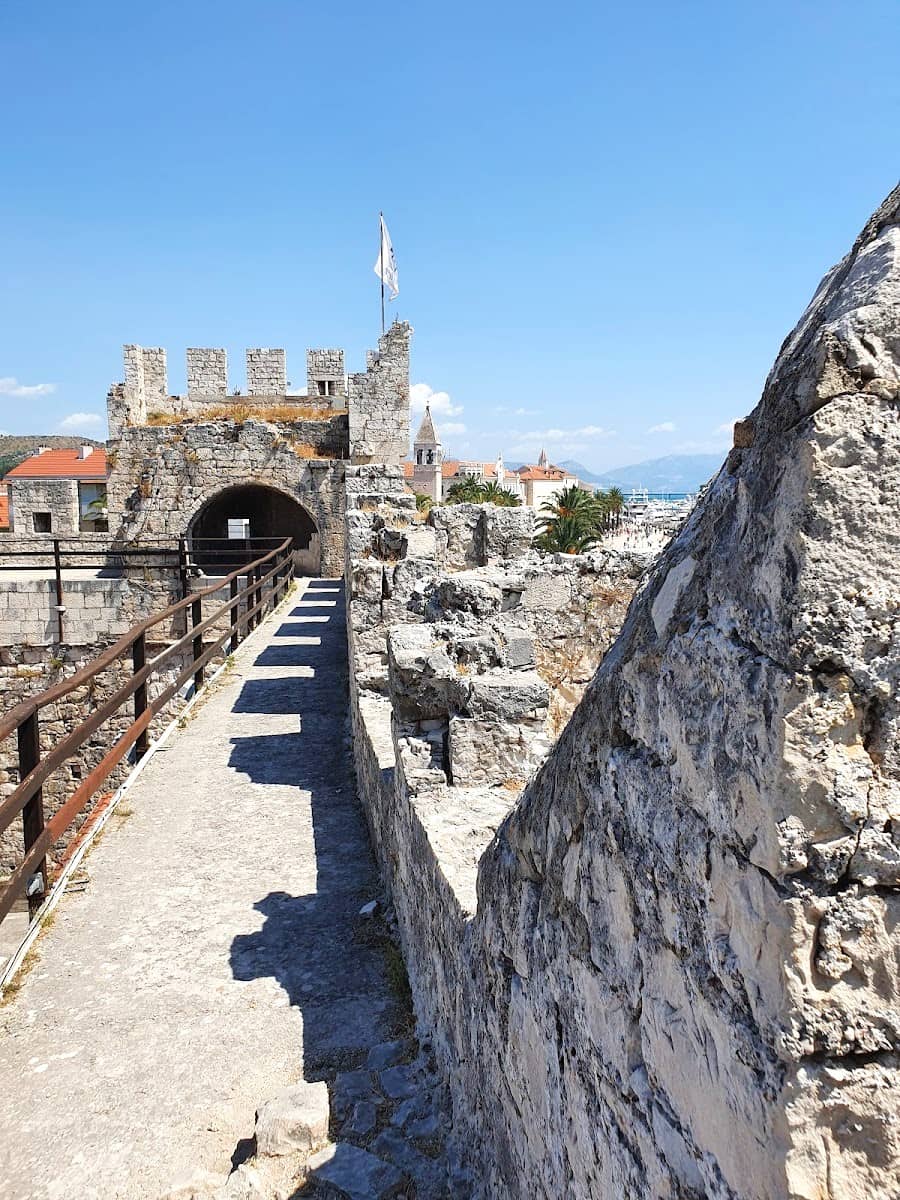
St. Mark’s Tower. Smaller but equally historic, this tower was part of Trogir’s Venetian defenses. Entry is 25 HRK (€3.30). I enjoyed the views from here, too, and the sense of history in every stone.
Useful Tourist Info. Tickets for the castle and tower can be bought at the entrance—no need to book ahead unless there’s a special event. The castle closes at sunset, so plan your visit in the afternoon for the best light. There are no elevators, and the steps can be slippery, so wear sturdy shoes.
Price Comparison: Trogir’s Historic Sites
| Site | Price (HRK) | Price (EUR) | Time Needed |
|---|---|---|---|
| Kamerlengo Castle | 30 | €4 | 45-60 min |
| St. Mark’s Tower | 25 | €3.30 | 30 min |
| Cathedral + Bell Tower | 60 | €8 | 90 min |
| City Museum | 40 | €5.30 | 60 min |
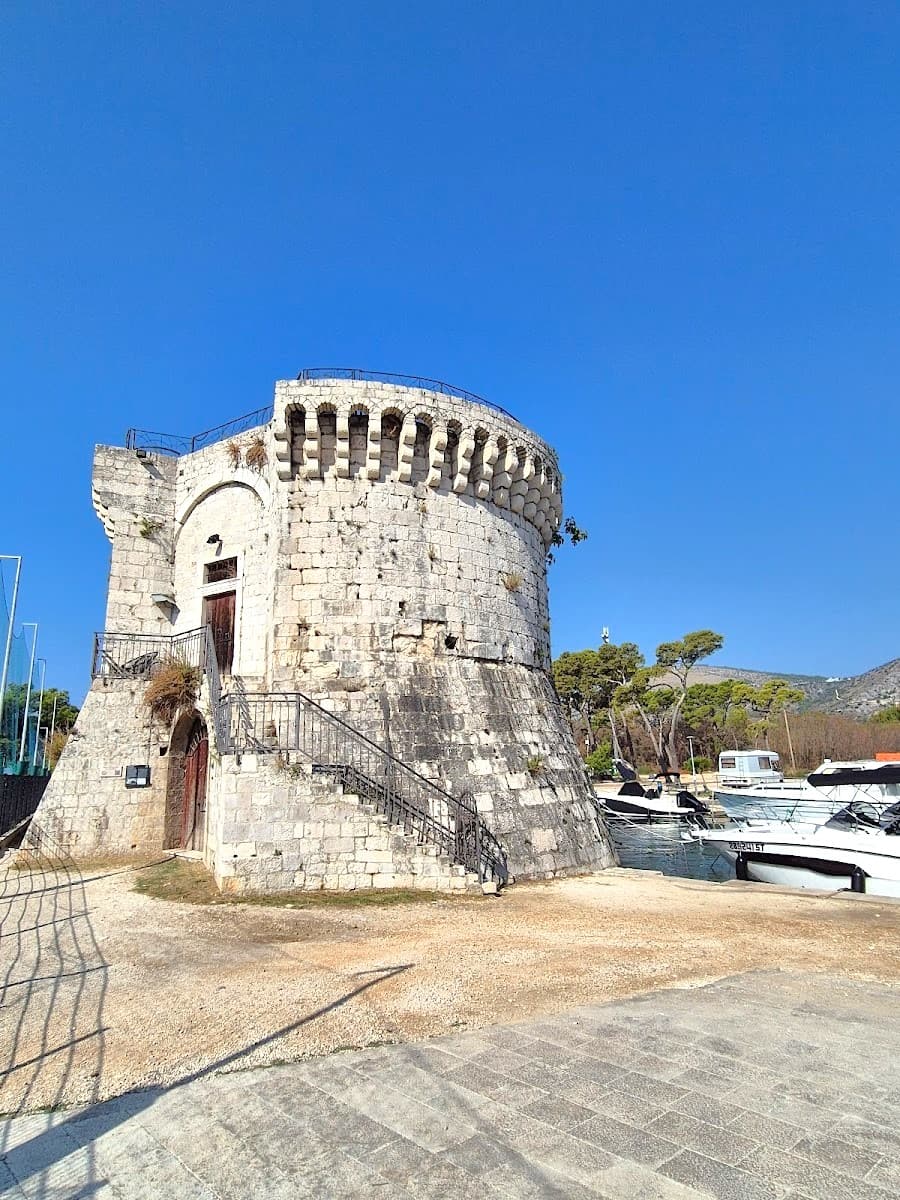
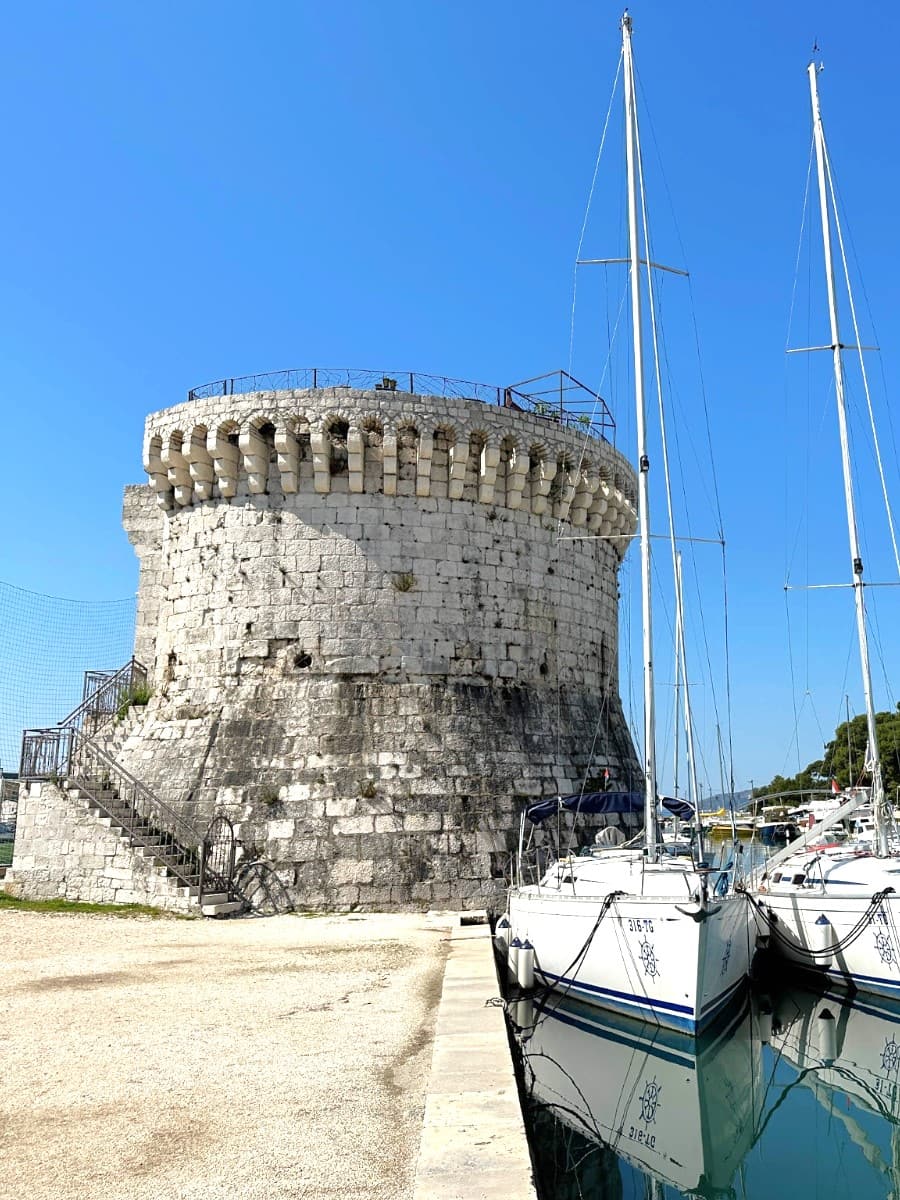
Budget Tip: If you’re short on time or kuna, pick Kamerlengo Castle for the best mix of history and views.
Don’t Miss:
- Sunset from the castle walls
- Summer concerts in the courtyard
⭐ Best Activities
- Trogir 2-Hour City Tour – Start at the South Tours office, Hrvatskih mučenika 28, in Trogir’s old town. Discover the highlights of this UNESCO-listed gem in just two hours.
4. Central Square
Central Square. This is the heart of Trogir. I loved sitting at an outdoor café (coffee is about 15 HRK/€2) and watching the world go by. The square buzzes with life—street performers, local families, and the occasional wedding.
Historic Buildings. The Town Hall, City Loggia, and Cipiko Palace surround the square. Each one has its own story, from Renaissance architecture to Gothic windows. The Loggia is a great spot for people-watching or snapping photos.
Useful Tourist Info. The square is busiest from 10 AM to 2 PM, so arrive early for a quieter experience. Most cafés offer free Wi-Fi and accept cards. Public toilets are located just off the square (5 HRK/€0.70), and there’s a small market nearby for snacks and souvenirs.
Insider Tip: Visit at night when the buildings are beautifully lit and the crowds thin out.
Best Cafés for a Break:
- Caffe Bar Galion (great people-watching)
- Kavana Central (fresh pastries)
⭐ Best Activities
- Trogir & Split Walk Tour with Daniela – Join Daniela for a guided walking tour connecting the best of Trogir and Split.
5. Waterfront Promenade
Waterfront Promenade (Riva). This palm-lined walkway is my favorite place for a sunset stroll. The views of the marina, Adriatic Sea, and Čiovo Island are unbeatable. I loved watching the yachts and fishing boats come and go.
Seafood Restaurants. The promenade is lined with places serving fresh fish and Dalmatian specialties. I enjoyed grilled fish and blitva (Swiss chard with potatoes) for about 150 HRK (€20) while watching the sun dip below the horizon.

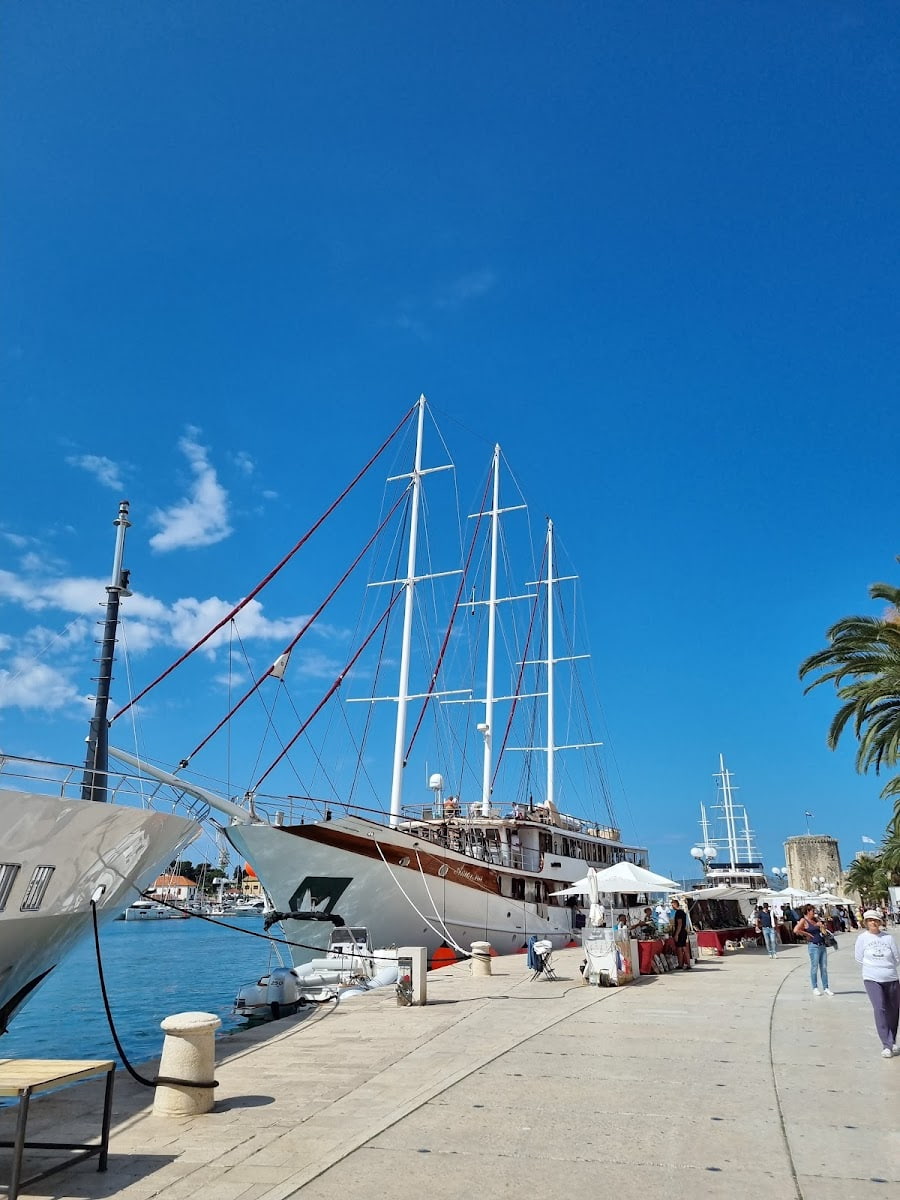

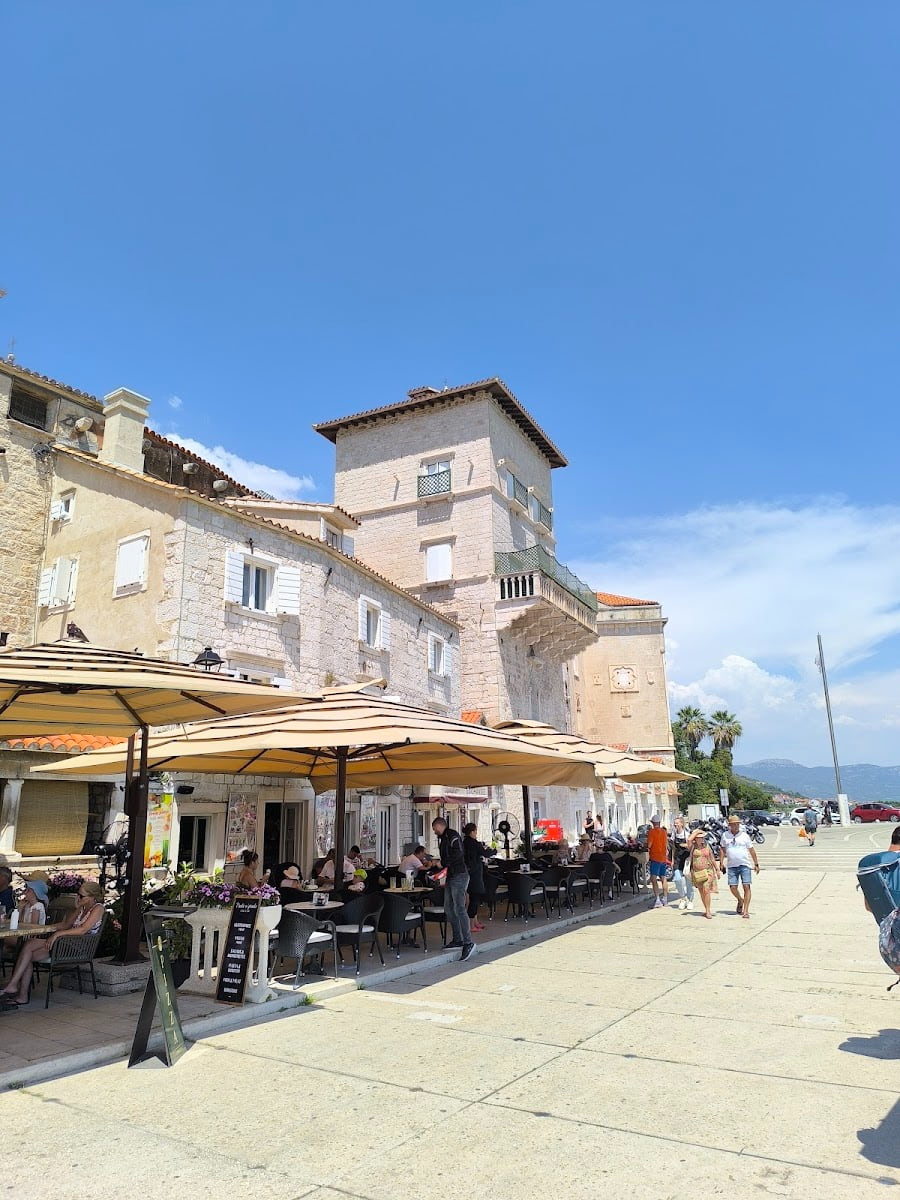
Useful Tourist Info. The promenade is busiest in the evening, especially in summer. Many restaurants offer lunch menus (60-90 HRK/€8-12) until 3 PM. Boat tour stands line the waterfront—check prices and itineraries before booking, as they can vary widely.
Boat Tours. This is the starting point for trips to the Blue Lagoon, Three Islands, and Blue Cave. Prices range from 300-600 HRK (€40-80), but you can take a local water taxi to Okrug Gornji Beach for just 20 HRK (€2.65) each way.
Common Tourist Mistake: Many visitors stick to the busiest part of the promenade. Walk a bit further for quieter spots and better views.
Budget Tip: For a cheap adventure, grab a gelato and walk the length of the promenade at sunset—no ticket required.
Quick List: What to Do on the Promenade
- Watch the sunset
- Try local gelato
- Book a boat tour
- Enjoy people-watching
⭐ Best Activities
- Trogir Old Town History and Monuments Private Guided Walking Tour – Dive deep into Trogir’s history and monuments with a private guide.
Things to Do in Trogir with Kids
1. Water Taxi Ride
Maritime adventure. Taking a water taxi from Trogir opened up a whole new perspective of this coastal gem. I boarded at the main promenade and instantly felt the refreshing sea breeze as we pulled away from the harbor, the medieval skyline of Trogir growing more picturesque with distance.
Island connections. The water taxi service connects Trogir with nearby destinations like Split, Čiovo Island (Slatine beach), and various other coastal spots. I chose the Trogir-Split route and was treated to stunning coastal views for the entire 60-minute journey.
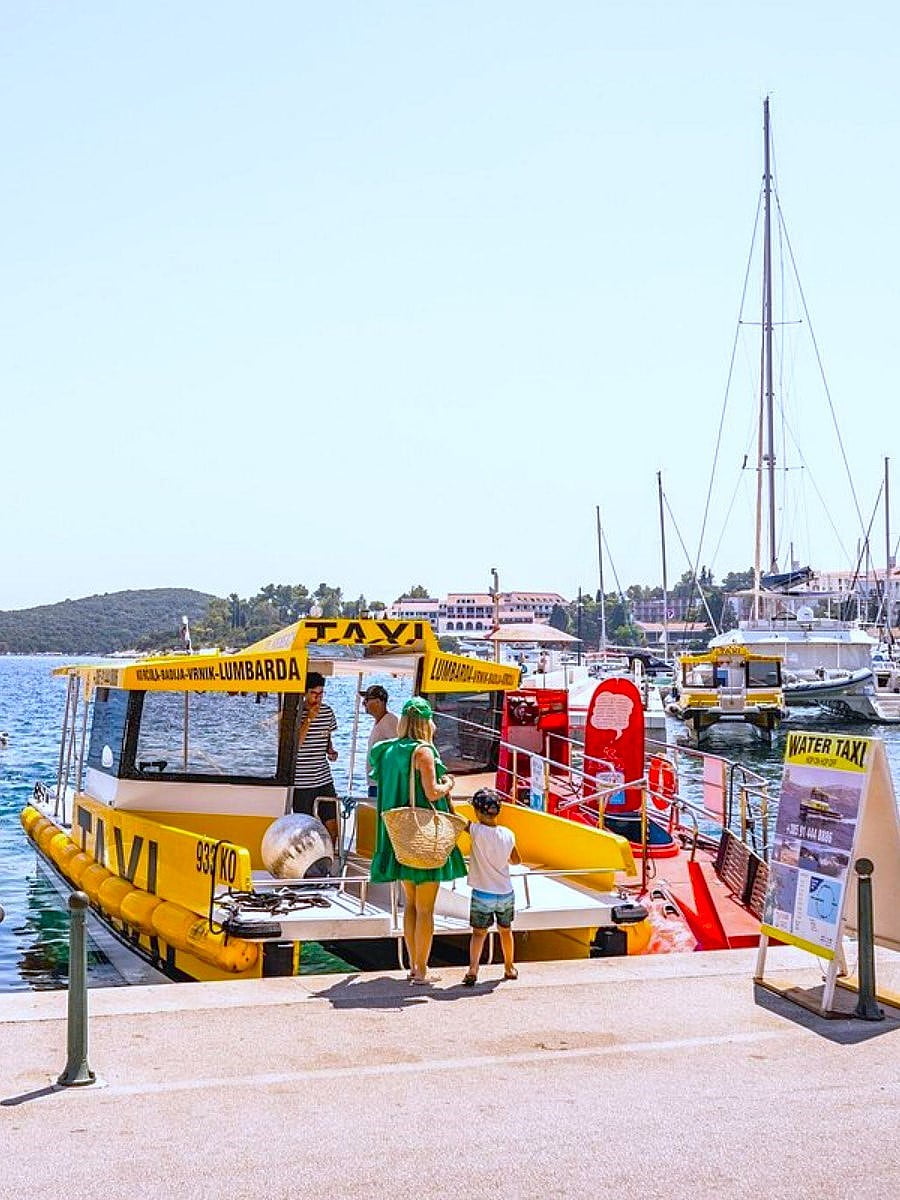
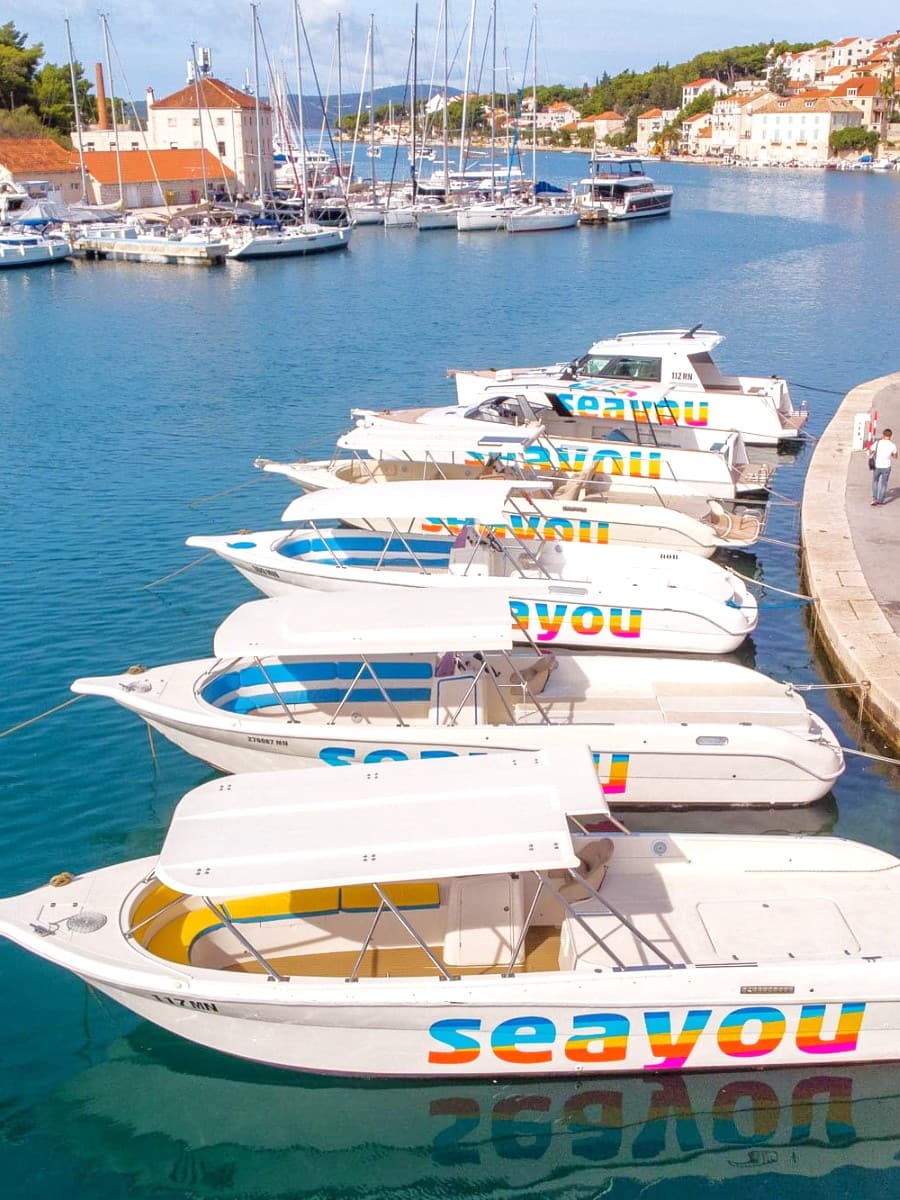
Practical info. Prices: Trogir-Split: 8 EUR (adults), 4 EUR (children); Trogir-Slatine: 5 EUR (adults), 3 EUR (children). Boats run several times daily, with reduced schedules outside the summer season.
Local experience. During my ride, I chatted with a friendly local captain who pointed out hidden coves and shared stories about life on the Dalmatian coast. These unplanned conversations often become the most memorable parts of travel.
Budget tip. For families, the water taxi can actually be more economical than taking a bus or taxi between coastal towns, plus you get the added bonus of beautiful sea views and a more enjoyable journey.
Popular water taxi routes from Trogir:
- Trogir to Split
- Trogir to Čiovo Island (Slatine beach)
- Trogir to Blue Lagoon
- Trogir to Šolta Island
- Trogir to Drvenik Veli
2. Pantan Nature Reserve
Natural oasis. Just a short distance from Trogir’s bustling Old Town, Pantan Nature Reserve offers a peaceful retreat into nature. As I entered the reserve, the urban sounds faded away, replaced by chirping birds and rustling reeds.
Wetland wonders. The reserve’s boardwalks led me through lush marshlands teeming with wildlife. I spotted herons stalking fish in shallow waters and colorful dragonflies darting among the reeds. The contrast between this serene ecosystem and nearby Trogir’s medieval streets was striking.
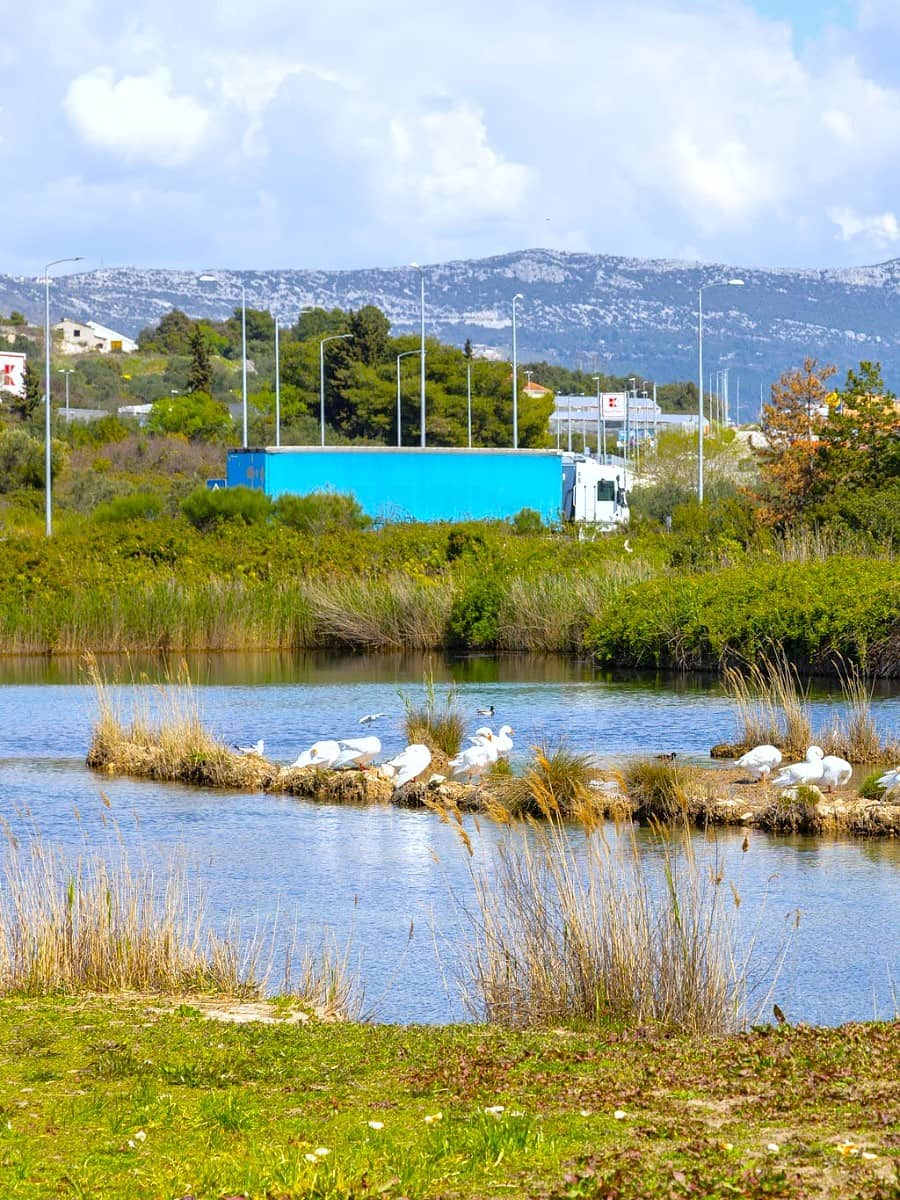
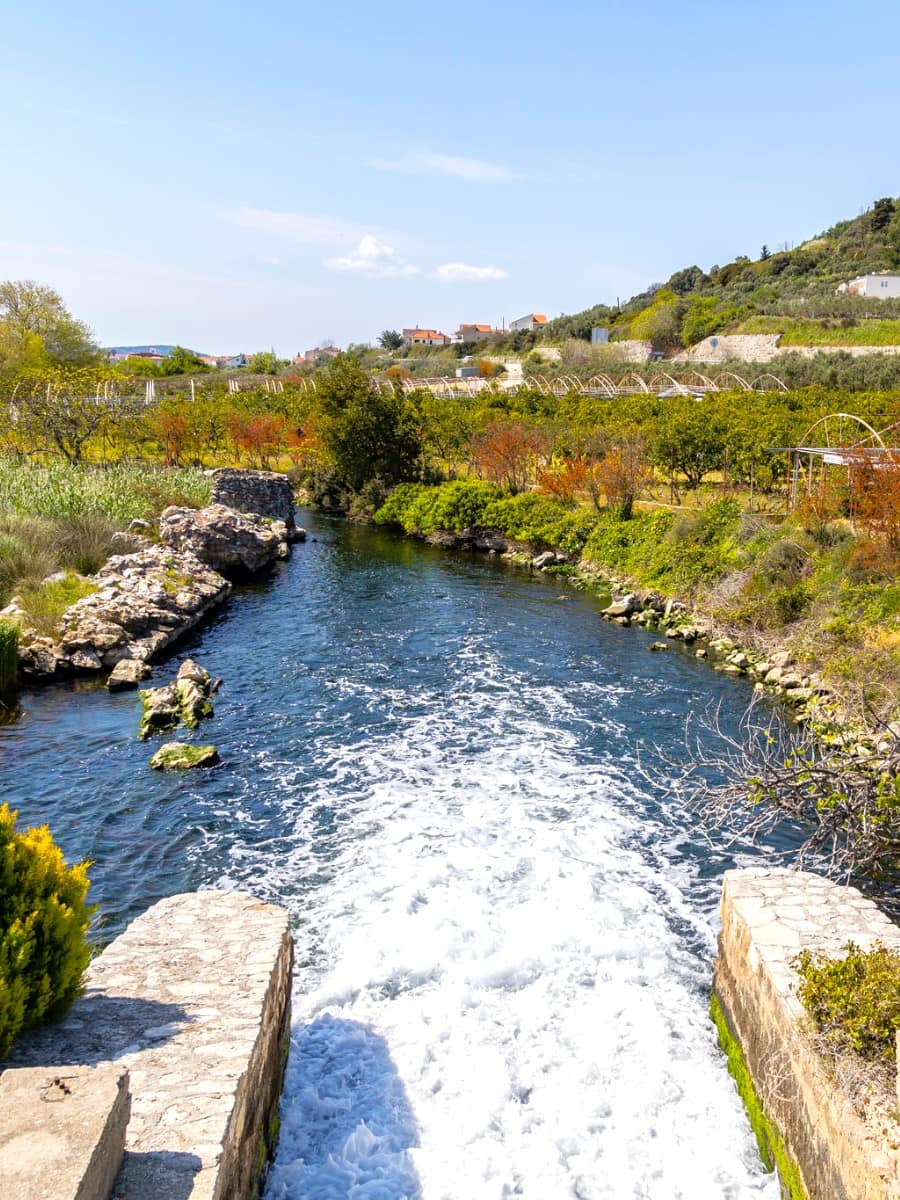

Birdwatching paradise. Pantan is a haven for bird enthusiasts. I brought binoculars and was rewarded with sightings of egrets, kingfishers, and even a majestic osprey soaring overhead. The reserve’s diverse habitats attract both resident and migratory species.
Practical info. Entrance: Free. Best visited early morning or late afternoon for optimal wildlife viewing. Bring insect repellent and water. Comfortable walking shoes recommended.
Local tip. I discovered a small, family-run restaurant near the reserve’s entrance serving fresh seafood caught in nearby waters. The grilled sea bass paired perfectly with a crisp local white wine.
3. Zabavni Park
Adventure zone. Just on the other side of Kamerlengo Fortress, I stumbled upon Zabavni Park, a small but exciting activity center that immediately caught my eye. The colorful trampolines and bungee activities created a lively atmosphere against the backdrop of Trogir’s ancient stones.
Kid-friendly fun. I watched as children bounced with pure joy on the trampolines, their laughter echoing across the area. The bungee activities seemed particularly popular, with kids safely harnessed as they experienced the thrill of bouncing higher than they ever could on their own.
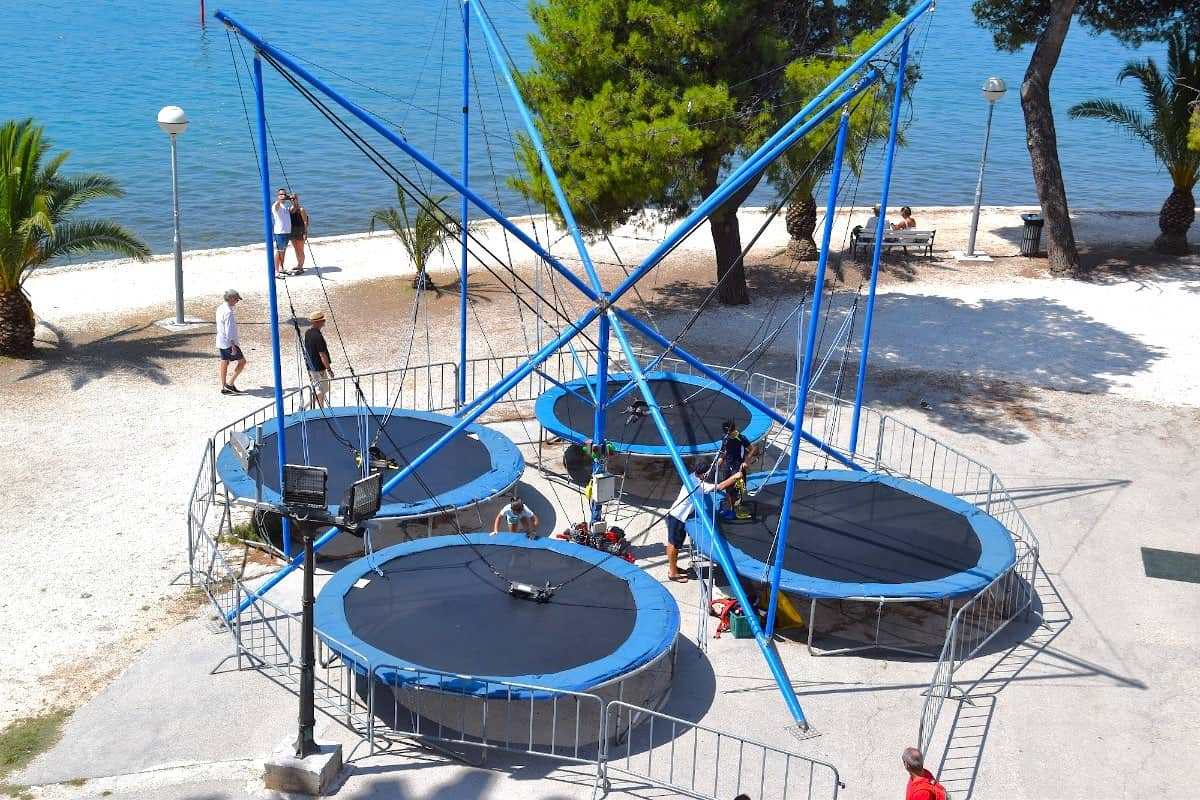
Seasonal operation. It’s worth noting that Zabavni Park doesn’t operate year-round. When I visited in summer, it was bustling with activity, but locals informed me that these attractions typically close during the off-season months.
Practical info. Price: Approximately 30 HRK ($4.50 USD/€4 EUR) per activity. No entrance fee to the park itself. Open daily 10 AM – 8 PM during summer months (June-September).
Parent tip. This is a perfect spot to let kids burn off energy after sightseeing in the Old Town. I noticed many parents relaxing at nearby cafés while keeping an eye on their children having fun.
Activities at Zabavni Park:
- Trampolines
- Bungee jumping
- Inflatable slides
- Mini go-karts
- Face painting (weekends only)
Free Things to Do in Trogir, Croatia
1. Land Gate and North Gate
Architectural marvels. These ancient entrances to the city tell fascinating stories without charging admission. The Land Gate (Kopnena vrata) particularly impressed me with its Renaissance design and the carved Venetian lion still proudly displayed above the archway. When I touched the smooth stone walls, worn by countless hands over centuries, I felt an immediate connection to Trogir’s past.
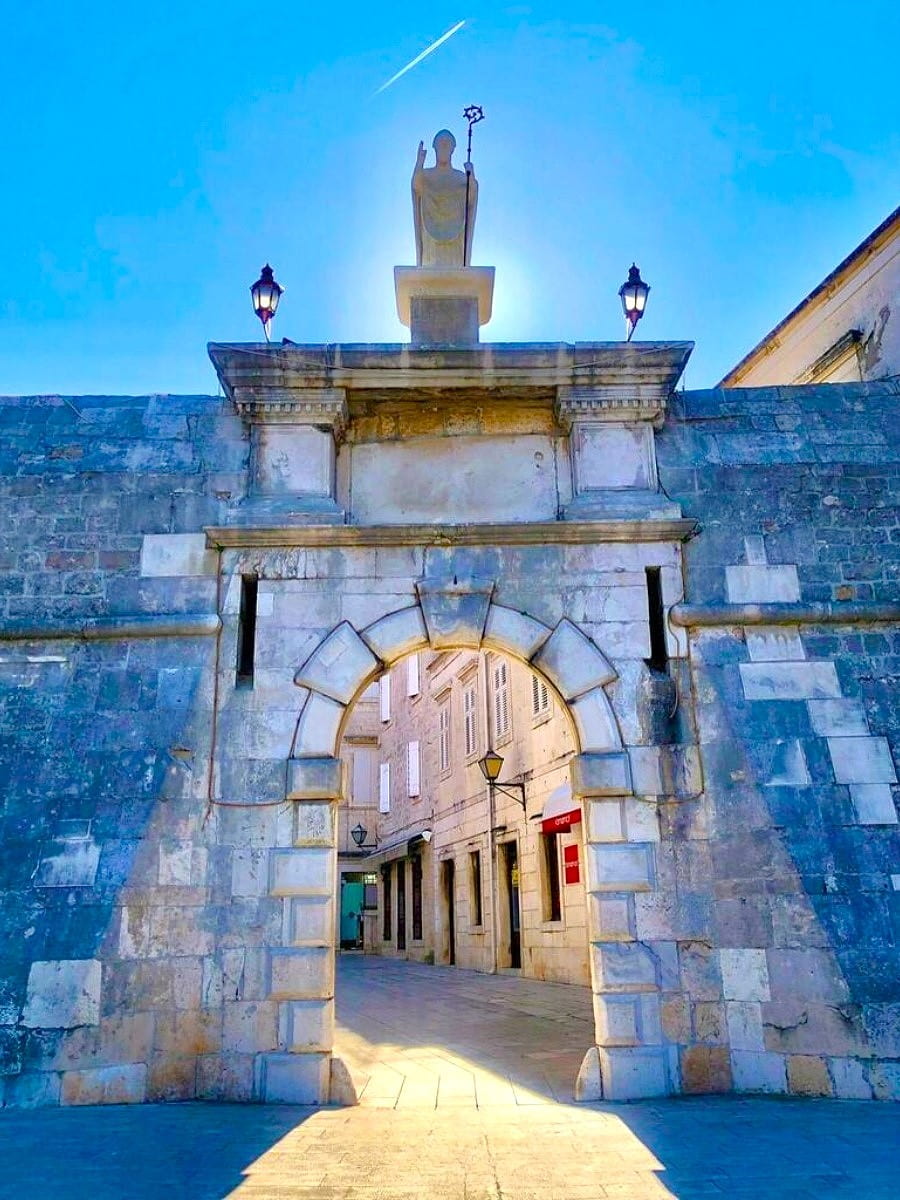
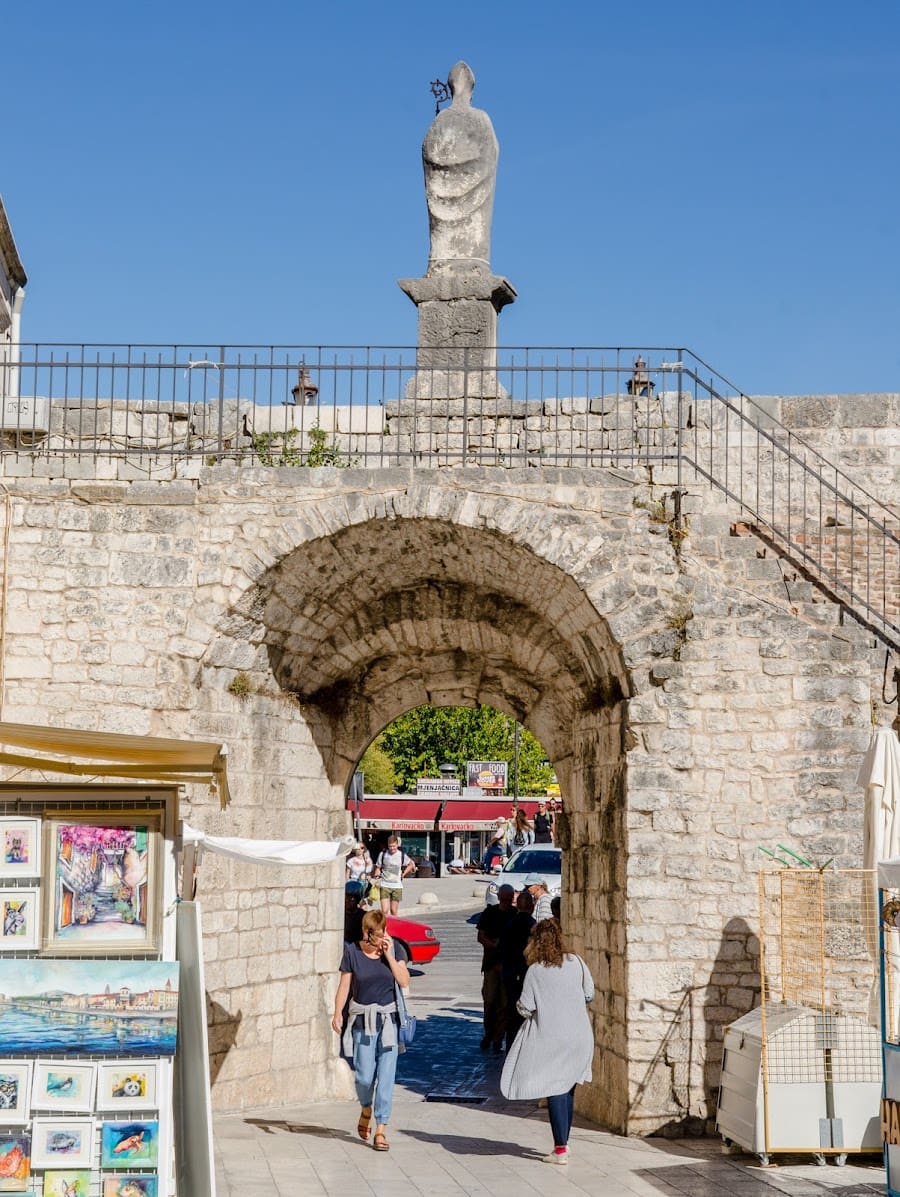
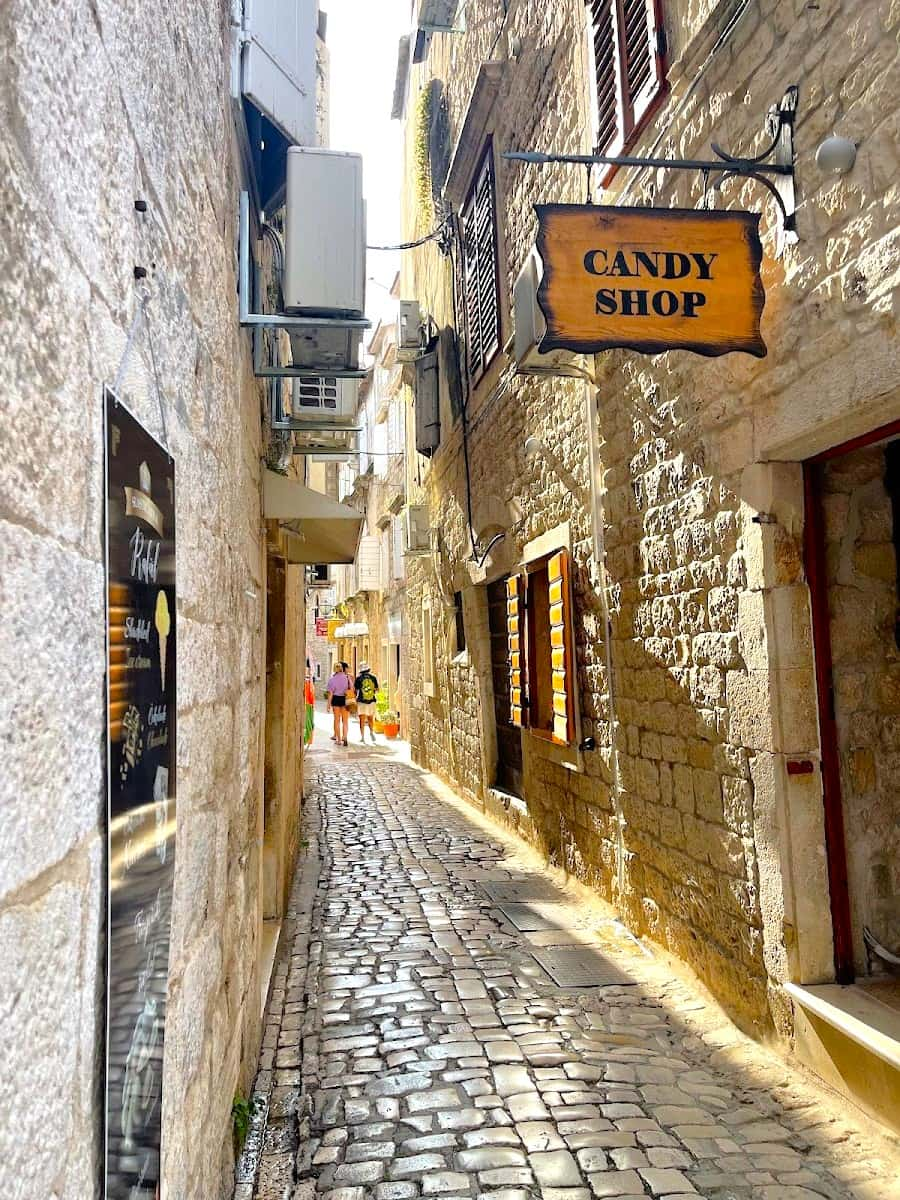
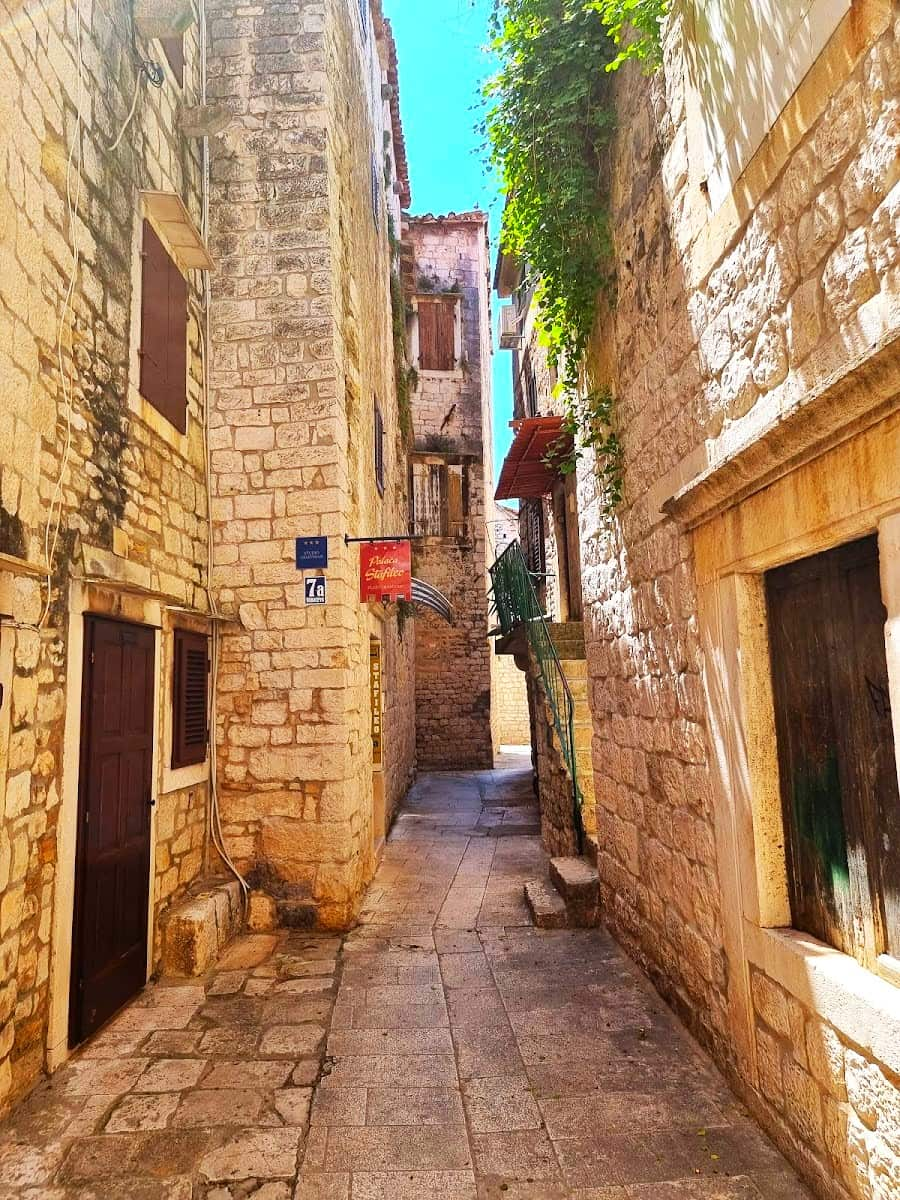
Picturesque Contrast. The North Gate offers a different perspective, less grand but equally charming. As I passed through its stone archway, the sudden transition from narrow medieval streets to the open waterfront created a wonderful sensory contrast. The gate is topped by a statue of Blessed Ivan Orsini, Trogir’s first bishop, which most tourists walk right past without noticing.
Insider Tip: Visit these gates during the golden hour (about an hour before sunset) when the light makes the ancient stones glow and creates dramatic shadows – perfect for photography enthusiasts.
2. Hidden Beaches
Natural escapes. While many beaches around Trogir charge for loungers and umbrellas, I found several free spots perfect for swimming. A short walk across the bridge to Čiovo Island revealed small pebble coves where locals gather away from the tourist crowds.
Hidden Gems. One particular beach near Okrug Gornji became my favorite spot. Unlike the main beach with its rows of paid sunbeds, this small stretch offered the same crystal-clear Adriatic waters without any cost. The pebbles were smooth underfoot, and pine trees provided natural shade from the intense midday sun.
Common Mistake: Tourists often stick to the main beaches, unaware that just a 10-minute walk can lead to quieter, free alternatives with the same beautiful water.
Seasonal Activities in Trogir, Croatia
1. Christmas in Trogir
Festive magic. Trogir during the Christmas season transforms into a magical wonderland that few tourists ever experience. I stumbled upon this hidden gem of timing during a December visit when the cobblestone streets were adorned with twinkling lights and the scent of mulled wine filled the crisp air. The ancient stone buildings provide the perfect backdrop for the holiday decorations, creating a scene that feels like stepping into a medieval Christmas card.
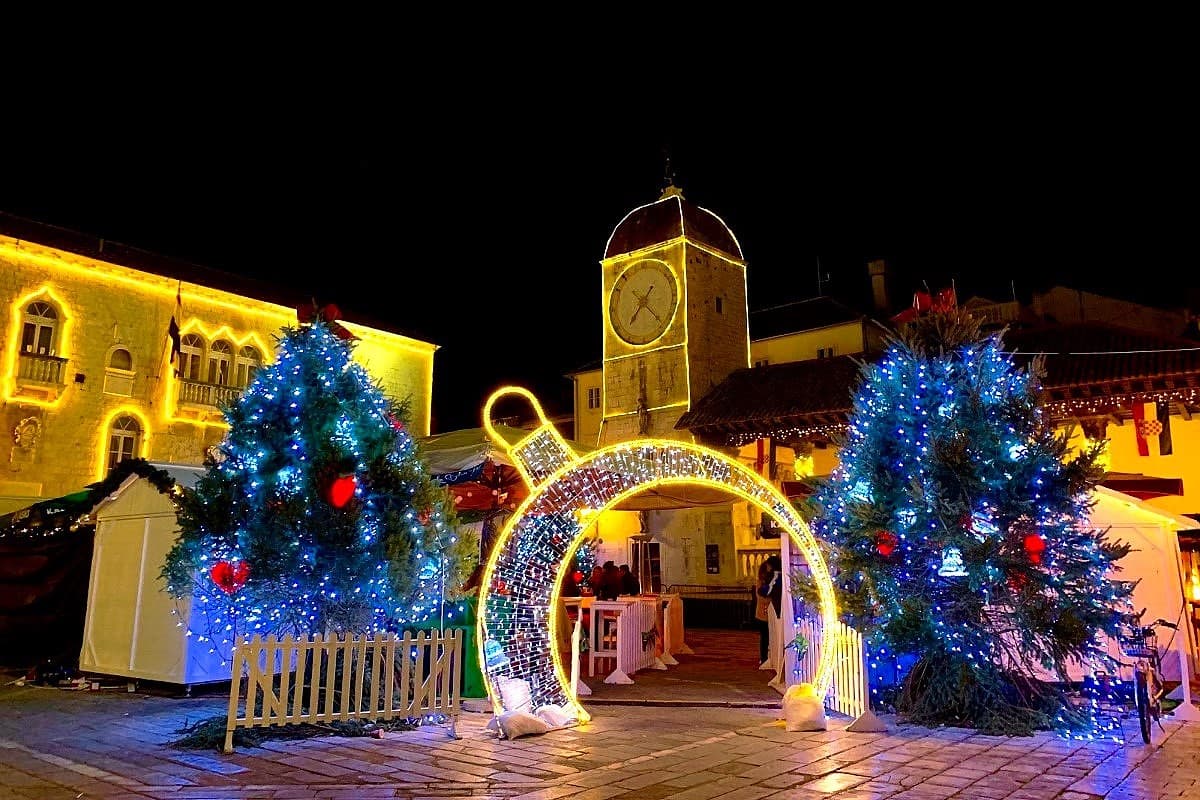
Bright Fair. The Christmas Market in the main square (Trg Ivana Pavla II) becomes the heart of celebrations. Local vendors sell handcrafted ornaments, lavender products, and traditional Croatian treats from wooden stalls. I purchased a beautiful hand-painted ceramic ornament for just 35 HRK ($5 USD/€4.50 EUR) that now holds a special place on my tree at home.
Budget Tip. Visit St. Lawrence Cathedral during Advent when they host free evening concerts. I attended a performance by a local choir that echoed hauntingly through the ancient stone interior – an experience that would cost a fortune in other European destinations.
2. Summer Festivals and Events
Cultural celebrations. Summer brings Trogir to vibrant life with numerous festivals and events. The highlight of my summer visit was the Trogir Cultural Summer Festival (mid-June through mid-September), featuring performances in the most atmospheric venues around town.
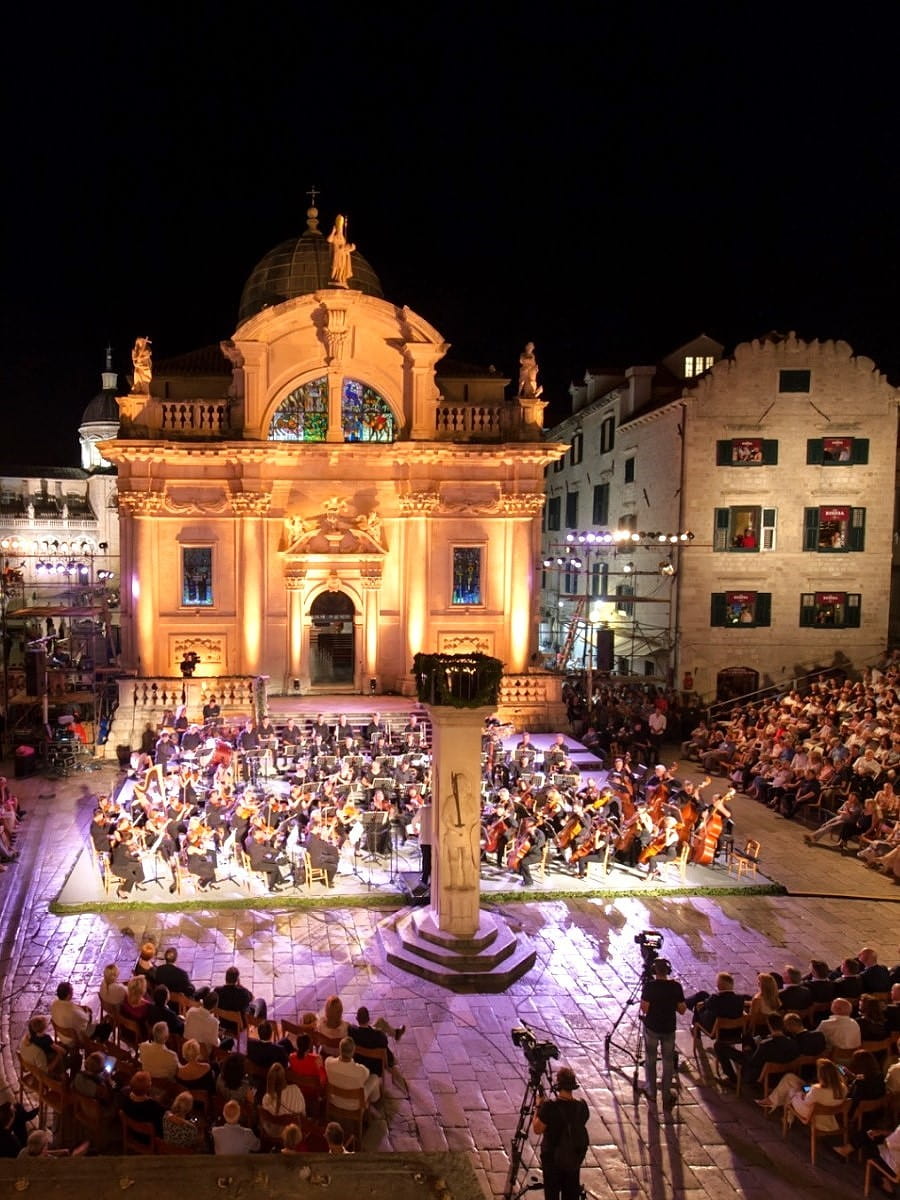
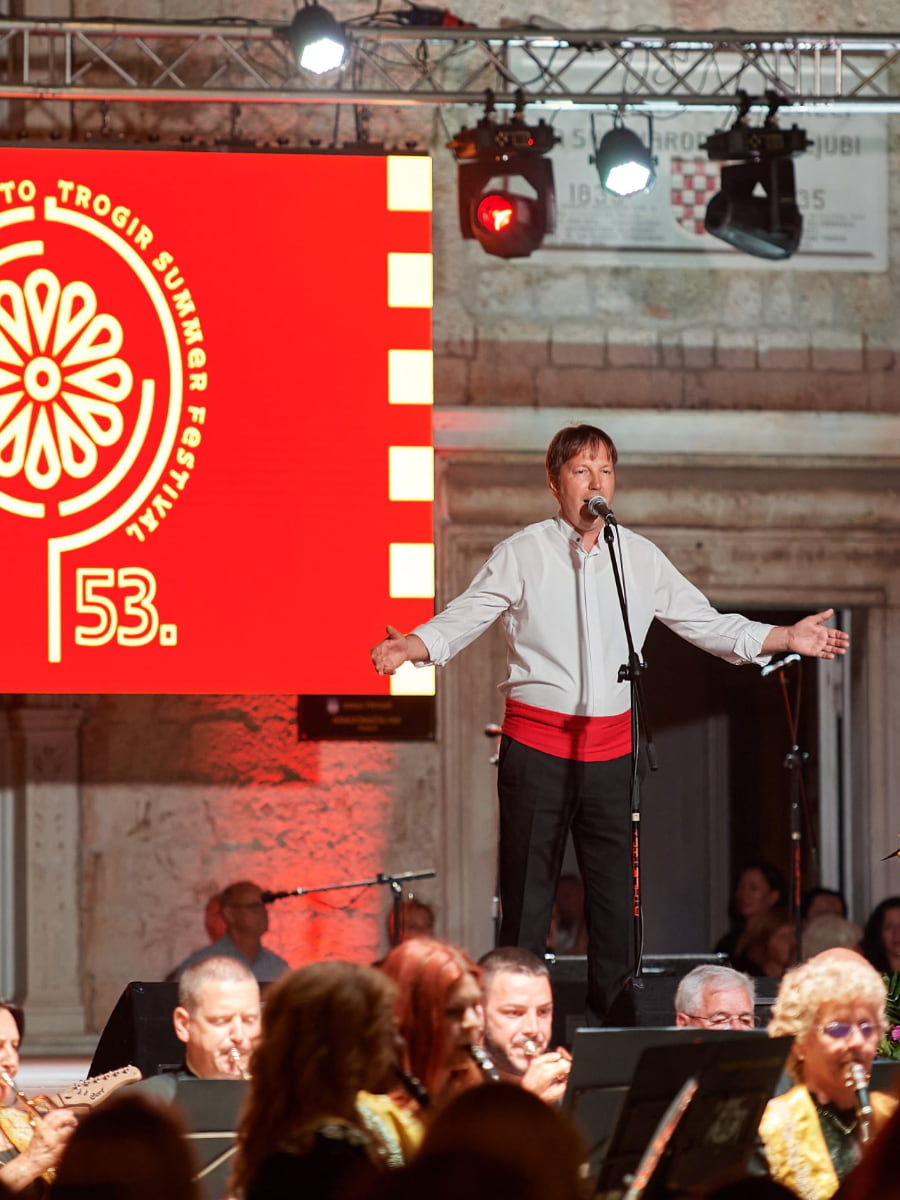
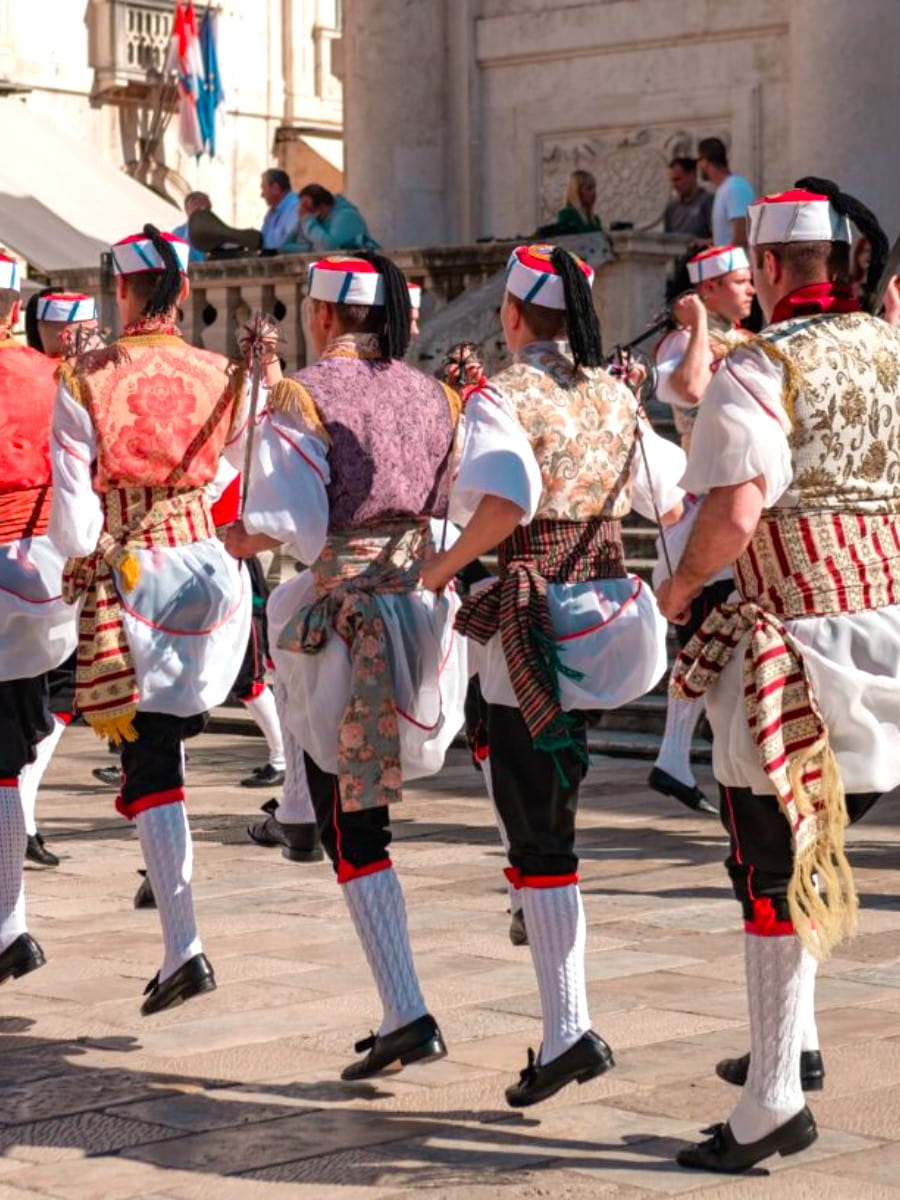
Medieval Fair. It was another unexpected delight, usually held in late July. The narrow streets of Old Town filled with performers in period costumes, traditional craftspeople, and food vendors selling authentic Dalmatian dishes. I tried soparnik (a traditional Swiss chard pie) for just 15 HRK ($2.20 USD/€2 EUR) from a local woman who proudly told me she was using her grandmother’s recipe.
Event pricing comparison:
| Event | Timing | Entrance Fee | Location |
|---|---|---|---|
| Cultural Summer Festival | June 15-Sept 15 | Free-150 HRK ($0-22 USD/€0-20 EUR) | Various venues |
| Medieval Fair | Last weekend in July | Free | Old Town |
| Fishermen’s Night | Every Friday in summer | Free | Waterfront |
| Klapa Music Evenings | Tuesday evenings | Free | St. Lawrence Square |
Budget Tip: The Tourist Information Center near the North Gate distributes free programs listing all summer events. I picked one up on my first day and planned my entire week around the free performances.
3. Spring Blooms in Trogir
Natural beauty. Spring (April-May) might be my favorite time to visit Trogir. The crowds are thinner, the temperatures perfect for exploration, and the surrounding landscapes burst with colorful wildflowers. The promenade comes alive with blooming oleanders and palm trees swaying in the gentle sea breeze.
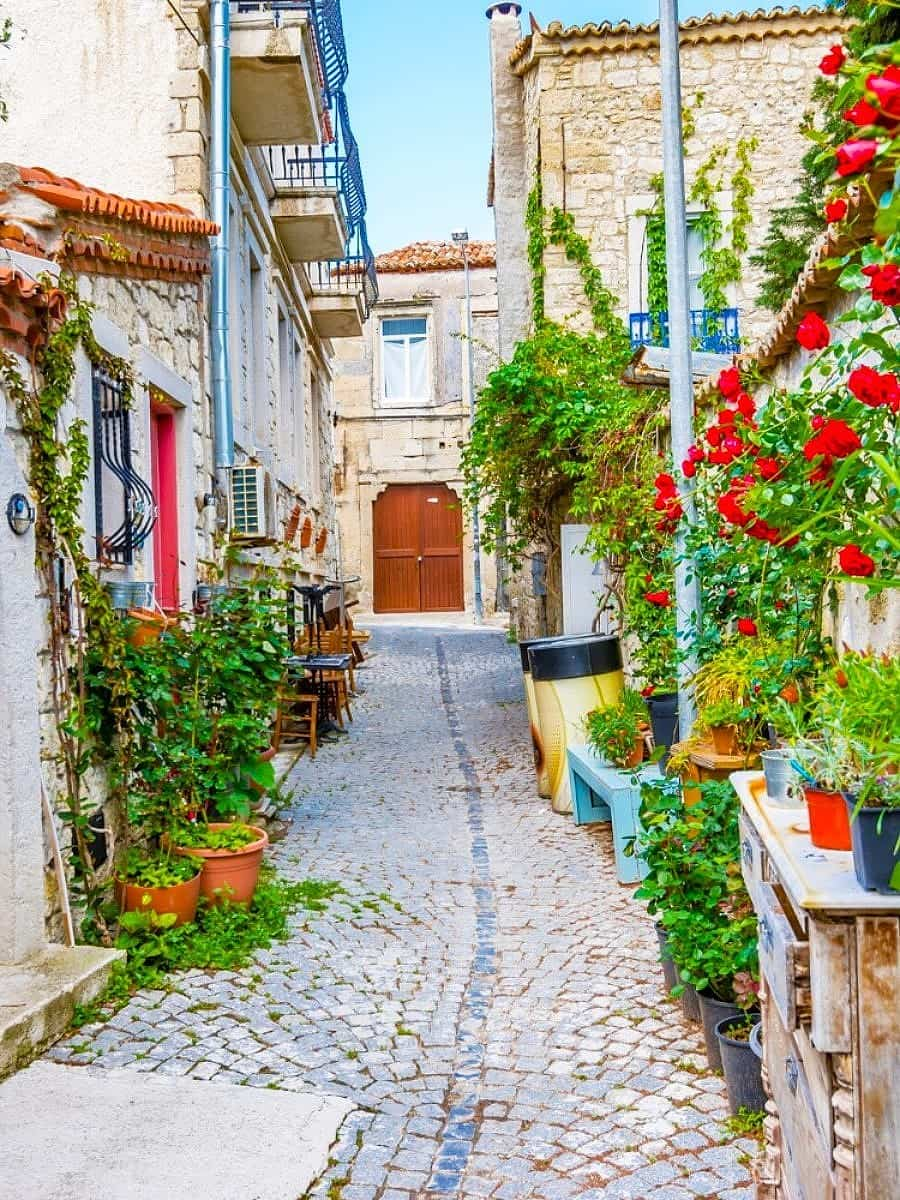
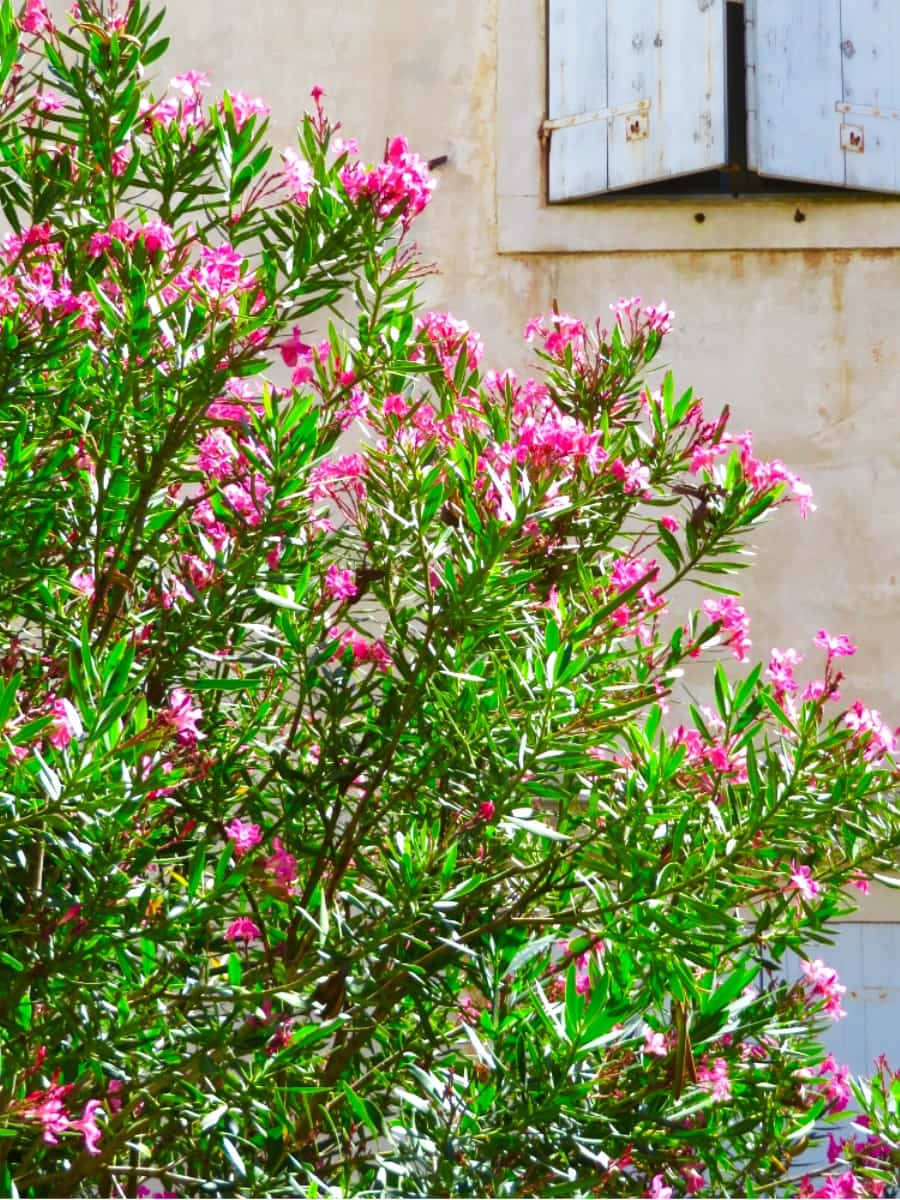
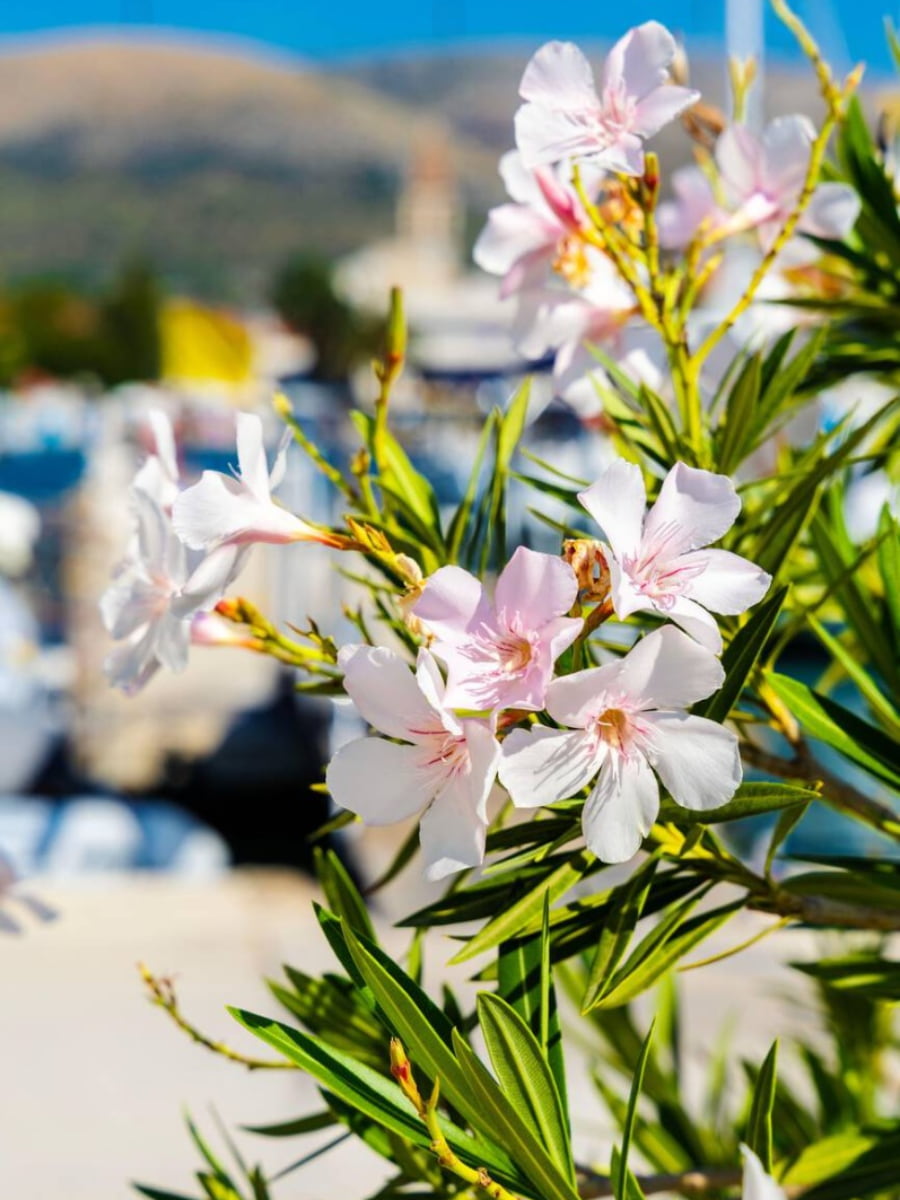
Blossom Paradise. I discovered a lovely walking path along the coast of Čiovo Island, just across the bridge from Old Town. The route was dotted with wild sage, rosemary, and poppies, creating a sensory experience as my footsteps released the herbal fragrances into the air. The views back toward Trogir’s skyline, dominated by the bell tower of St. Lawrence Cathedral, were absolutely stunning against the backdrop of spring greenery.
Insider Tip: Visit the Green Market (Tržnica) in spring to find local farmers selling wild asparagus, fresh fava beans, and other seasonal delicacies at much lower prices than restaurants charge for the same ingredients.
4. Autumn Foliage Walks
Peaceful exploration. By September and October, most tourists have departed, leaving Trogir’s streets blissfully uncrowded. The surrounding hills take on golden and russet hues, creating a beautiful contrast with the deep blue of the Adriatic. I found autumn to be perfect for longer walks and explorations that would be too hot in summer.
Peace of Soul. My favorite autumn discovery was the path to Pantan Nature Reserve, about a 20-minute walk from the Old Town. This wetland area becomes especially beautiful in fall, with changing leaves reflected in the still waters and migratory birds stopping by. I spent a peaceful morning watching herons fishing in the shallow waters, with barely another soul around.
Common Mistake: Many visitors overlook Trogir in autumn, assuming the weather will be poor. In reality, September and October often offer sunny days with temperatures around 20-25°C (68-77°F) – perfect for sightseeing without summer’s heat and crowds.
Day Trips from Trogir, Croatia
1. Krka National Park
Natural wonders. Just an hour’s drive from Trogir, Krka National Park offers a refreshing escape into nature. I set out early one morning, eager to beat the crowds and the summer heat. As I approached the park, the sound of rushing water grew louder, building anticipation for the spectacle ahead.
Panoramic View. The highlight of Krka is undoubtedly Skradinski Buk, a series of cascading waterfalls surrounded by lush greenery. I spent hours exploring the wooden walkways that wind through the park, offering stunning viewpoints of the falls. The mist from the waterfalls provided a welcome coolness in the summer heat, and the thunderous roar of water created a soothing natural soundtrack.

Insider Tip: While swimming is no longer allowed at the main waterfall, there’s a designated swimming area downstream. I packed a swimsuit and enjoyed a refreshing dip in the crystal-clear water – a perfect way to cool off after hiking.
Budget Tip: Entrance fees vary by season. I visited in June and paid 200 HRK ($30 USD/€27 EUR). If you’re on a tight budget, consider visiting in the off-season (November-March) when tickets are significantly cheaper at 50 HRK ($7.50 USD/€6.75 EUR).
⭐ Best Activities
- Split or Trogir: Krka National Park Daytrip with Boat Ride – Discover Krka’s waterfalls and enjoy a scenic boat ride from Split or Trogir.
2. Split
Urban adventure. Split, Croatia’s second-largest city, is just a 40-minute drive from Trogir. I hopped on an early morning bus (50 HRK/$7.50 USD/€6.75 EUR one-way) and arrived in time for a coffee on the bustling Riva promenade.
Historical Landmarks. The heart of Split is Diocletian’s Palace, a UNESCO World Heritage site that forms the core of the old town. Unlike Trogir’s well-preserved medieval feel, Split offers a unique blend of ancient Roman architecture with modern life pulsing through its veins. I wandered through the narrow alleys, stumbling upon hidden courtyards and centuries-old buildings now housing trendy cafes and boutiques.
Local flavor. For lunch, I ventured into the Green Market (Pazar), a vibrant open-air market just outside the palace walls. Here, I sampled local cheeses, prosciutto, and fresh figs – a delicious and affordable way to experience Dalmatian cuisine.
Budget Tip: Many of Split’s attractions, including the basement halls of Diocletian’s Palace, charge entrance fees. However, I discovered that the Cathedral of Saint Domnius offers free entry before 10:30 AM – a great way to see stunning Byzantine architecture without spending a kuna.
⭐ Best Activities
- Split Walking Tour – Explore Split’s rich history and vibrant culture on this guided walking tour.
3. Blue Lagoon and Three Islands Tour
Adriatic paradise. One of my favorite day trips from Trogir was a boat tour to the Blue Lagoon and nearby islands. I booked with a local operator for 350 HRK ($52 USD/€47 EUR), which included stops at three islands and plenty of swimming time.
Magic Cave. Our first stop was the Blue Lagoon, located between the islands of Drvenik Veli and Krknjaši. As we approached, I was struck by the incredible turquoise color of the water – it seemed almost unreal. Jumping into the crystal-clear sea was like diving into liquid glass, with visibility extending for meters in every direction.
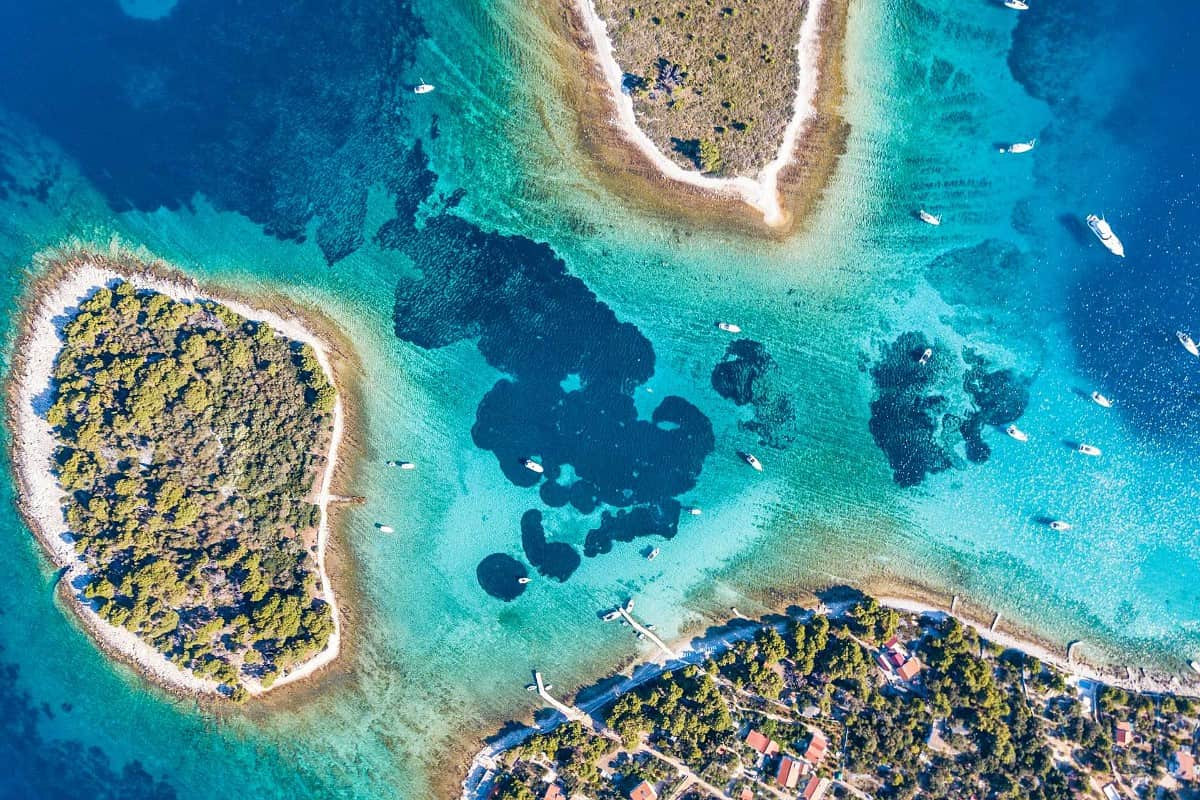
Island hopping. We continued to Šolta Island, where we had time to explore the charming village of Maslinica. I wandered through olive groves and sampled some local olive oil, appreciating the slower pace of island life.
Seaside Gem. Our final stop was Drvenik Veli, a sparsely populated island with beautiful pebble beaches. Here, I enjoyed a late lunch at a small konoba (traditional restaurant), savoring grilled fish caught that morning while watching the sun begin its descent towards the horizon.
Insider Tip. Bring water shoes if you have them. The pebble beaches can be tough on bare feet, and sea urchins are common in some areas.
⭐ Best Activities
- Trogir: Blue Lagoon, Maslinica & Solinska Bay Boat Tour – Cruise to the Blue Lagoon, Maslinica, and Solinska Bay for a day of swimming and sightseeing.
FAQ
1. Is Trogir worth visiting?
Trogir is definitely worth visiting. This historic town is full of charm, culture, and seaside beauty. It’s one of the must-see places in Croatia and perfect for a day trip or a longer stay.
2. Can I explore Trogir in one day?
Trogir in one day is very doable. Exploring the Old Town of Trogir, walking the bridge into the old town, visiting the Town Square, and admiring the Cathedral of St. Lawrence – the tallest structure in Trogir – are one of the top things to do.
3. How do I get to Trogir from Split?
It’s easy to get from Split to Trogir. You can take a bus from Split to Trogir, a short drive from Split, or even include it in a half-day trip from Split. Trogir is easy to reach and well-connected.
4. What are the top attractions in Trogir?
The Cathedral of St. Lawrence, Trogir City Museum, Town Square, and the views of Trogir from the waterfront are top highlights. Exploring Trogir’s Old Town is one of the best things you can do.
5. What’s the best time to visit Trogir?
The best time to visit Trogir is in late spring or early autumn, when the weather is warm and the crowds are smaller – ideal for enjoying a day in the sun.
6. Is Trogir good for day trips or a base for travel?
Trogir is an excellent base for day trips to nearby islands or coastal towns. It’s also perfect for a day trip if you’re planning a trip to Croatia or following a Croatia travel guide.
7. What does Trogir offer for food lovers?
Trogir offers some of the best restaurants by the sea where you can enjoy local Croatian cuisine after a day of sightseeing.
8. What’s unique about the layout of Trogir?
Trogir Island is connected to the mainland part of Trogir by a scenic bridge from the Old Town. The parts of the Old Town are compact but full of character – ideal for walking and discovery.
9. Is Trogir good for photography and sightseeing?
Definitely. With its rich history, charming architecture, and sea views, Trogir is a beautiful town and one of the best things to photograph along your Croatia itinerary.
